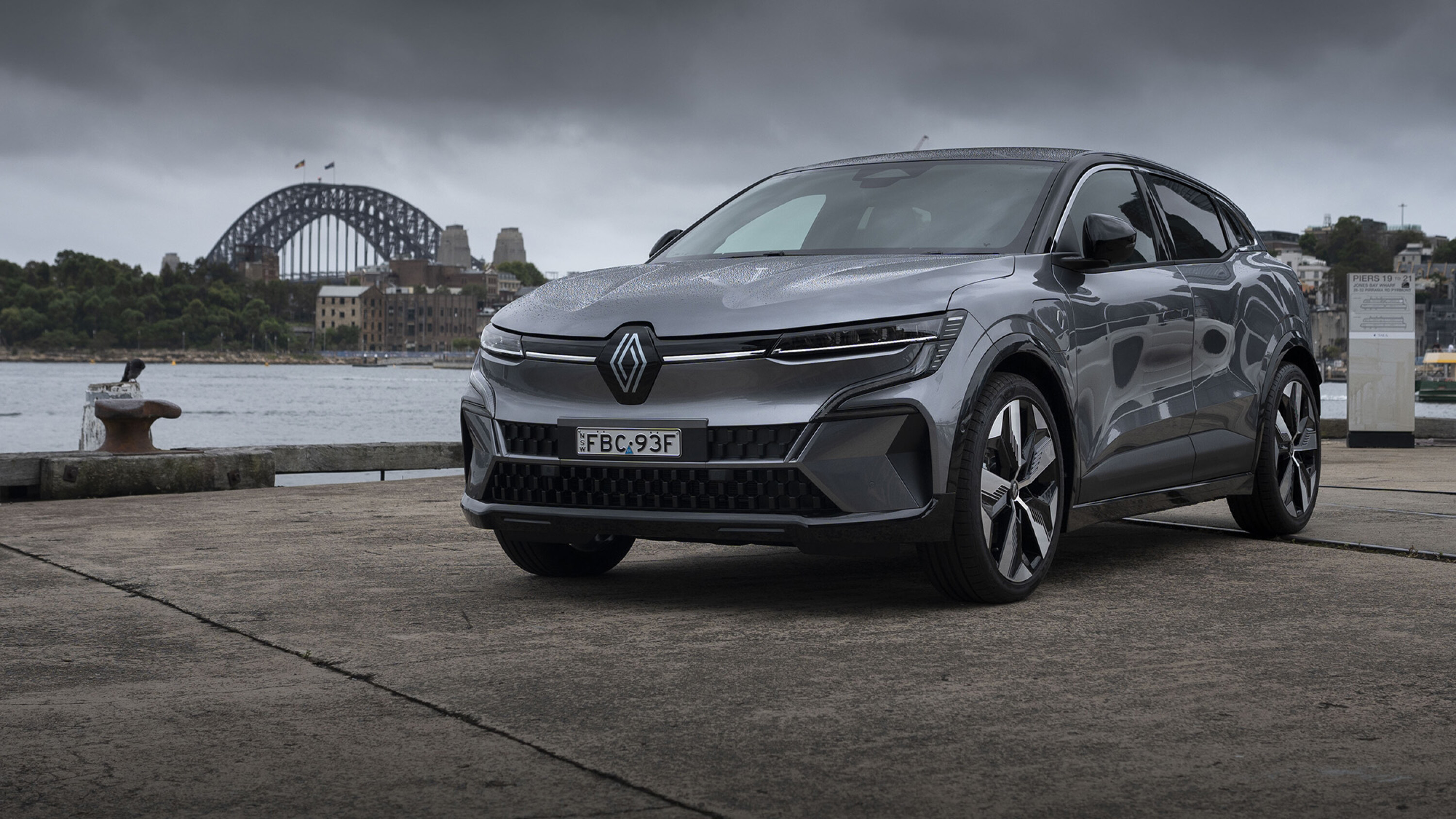Score breakdown
Things we like
- Rich feature list, good infotainment
- Comprehensive safety suite
- Efficiency
- Good boot space
Not so much
- Only one pricey spec available
- Cloth-only seats
- A lot of hard plastics
- Slow AC charging
Glen Sealey, head of the Renault brand for Australian importer Ateco, is quite the salesman. If he doesn’t believe in the Megane E-Tech’s potential, you’d never know it – but that’s the job, of course.
Speaking at this week’s short-but-sweet Australian launch of the new electric Megane, I asked Sealey to sell me on his new Renault instead of the obvious contenders in its $65,000 space: the Tesla Model 3, Model Y, Polestar 2 and Kia Niro.
“First of all, it’s the way it looks, the way it stands out,” Sealey says. “It feels like a GTI to drive, it’s light for an electric car. It’s very light compared to those others you spoke about.” The Megane E-Tech 60kWh claims a kerb weight of 1642kg, compared to 1940kg for the Polestar 2 and 1765kg for the Model 3.
Sealey dives into the drive: “Steering is direct and the suspension setup is fantastic,” and then continues at length about the dynamics, clearly aware such things matter to the revheads assembled before him.
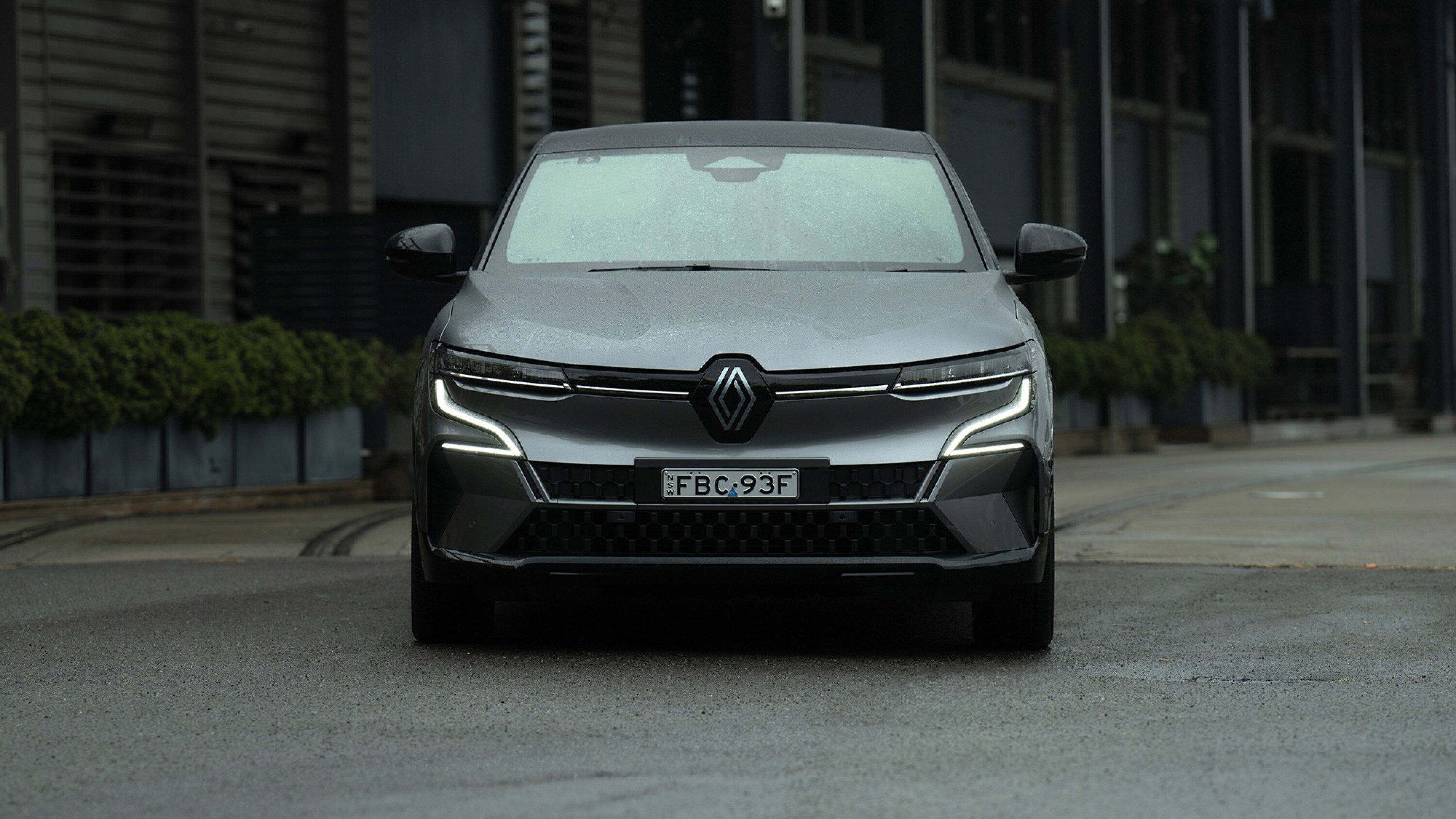
Finally, he touches on sustainability and the car’s point of origin – that is, not China.
“The car is made in France (the batteries are LG). That means you know the energy going into the car, the carbon footprint, you know where it all comes from, and it’s all (the components of the car) 90 percent recyclable,” Sealey says. In fact, according to Renault, it’s over 90 percent. The Polestar 2 claims 85 percent, and… Tesla’s in trouble for dumping hazardous waste in California.
“Lastly, there’s the ADAS (Advanced Driver Assistance Systems). There’s maturity around the ADAS in this car. Renault is 125 years old this year – they’ve been doing it for a long time, and over a decade in EVs.”
If Renault’s dealers are this well trained, the Megane E-Tech has a chance here. Let’s see if we agree.
JUMP AHEAD
- How much is it, and what do you get?
- Power, charging and driving range
- Where is this model in its lifecycle?
- How do rivals compare on value?
- Interior quality, comfort, space and storage
- Boot space
- Technology in the cabin
- What is it like to drive?
- How is it on fuel?
- How safe is it?
- Warranty and running costs
- VERDICT
- Specifications
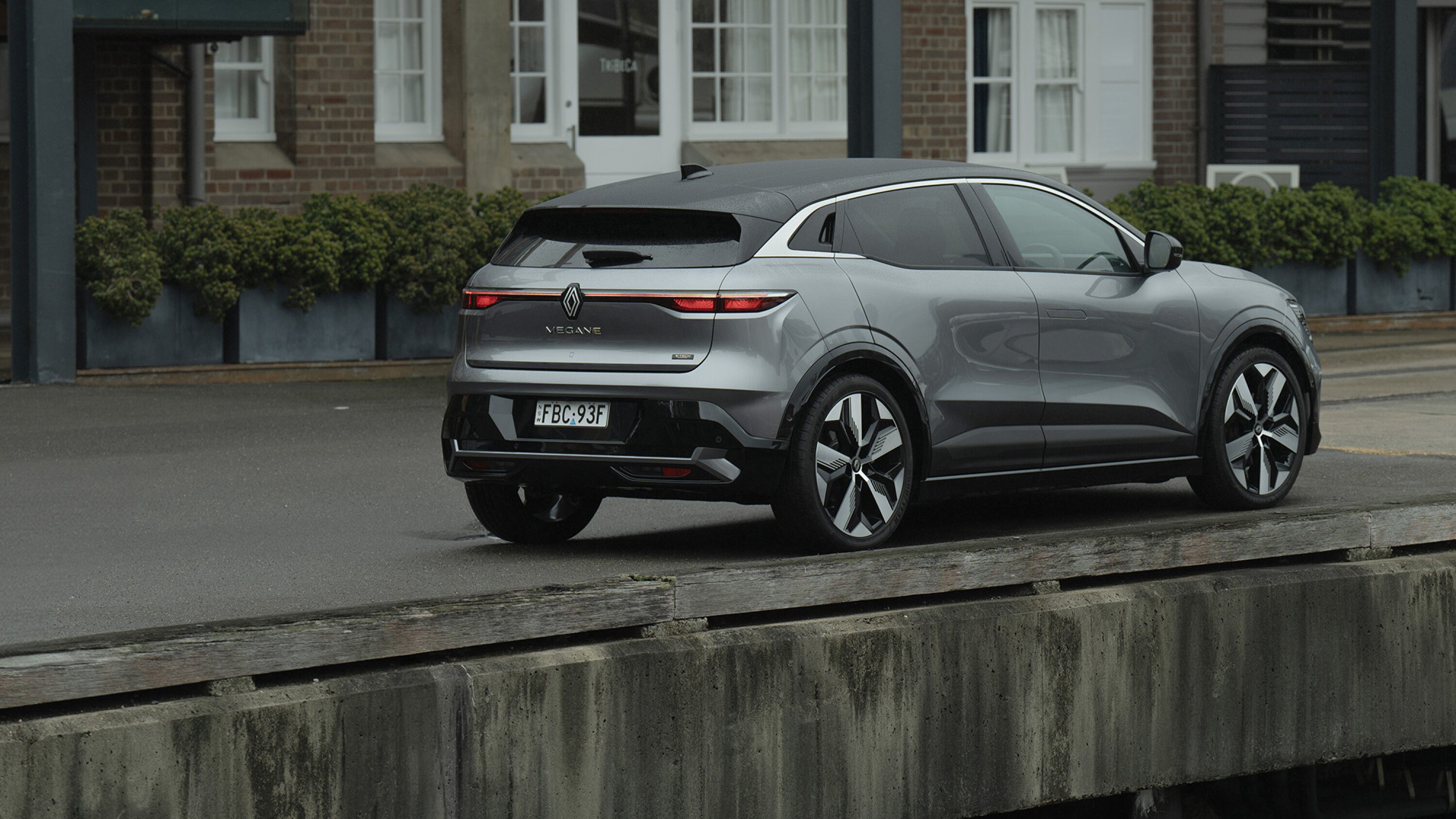
How much is it, and what do you get?
Priced from $64,990 before on-road costs, the Renault Megane E-Tech is offered in one well-equipped trim grade: Techno EV60.
The only optional extras are metallic paint and a two-tone paint style, but the standard features list we’re treated to in Australia would position our Techo somewhere between the AU$70k Techno+ and AU$75k Iconic trims in the UK.
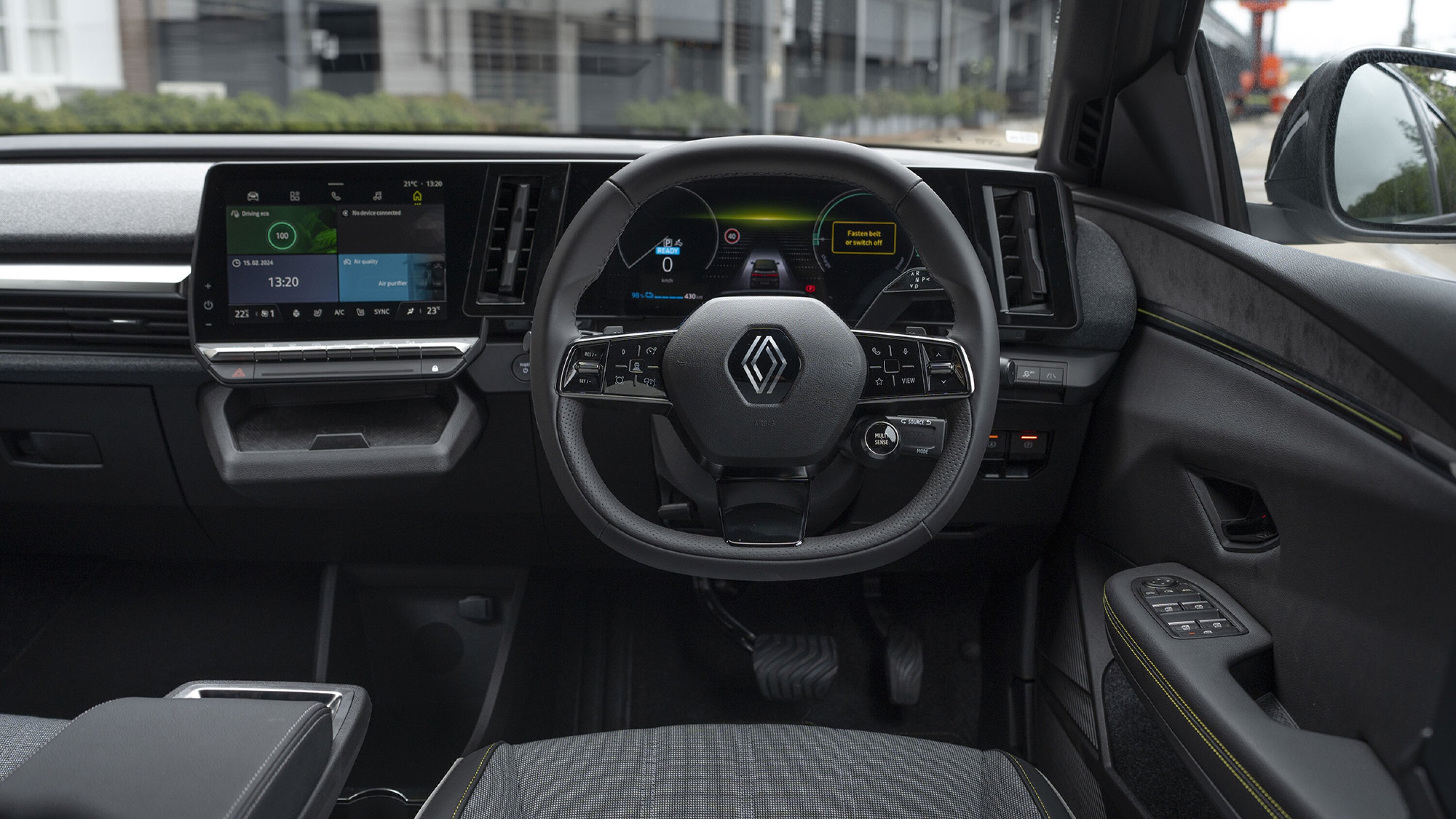
What do we miss out on, compared to Europe?
Australia and the UK get only the base-level 9.0-inch dash display rather than the taller 12.0-inch unit offered in mainland Europe, but otherwise… not much.
However, no matter where in the world you slip into a Megane E-Tech, you’ll get only a recycled plastic cloth and faux-leather trim for the seats – which are also manually adjusted, with the only powered aspects of the front seats being lumbar support and heating.
If these aren’t dealbreakers for you, the rest of the equipment list is comprehensive and well competitive with the Megane E-Tech’s price rivals.
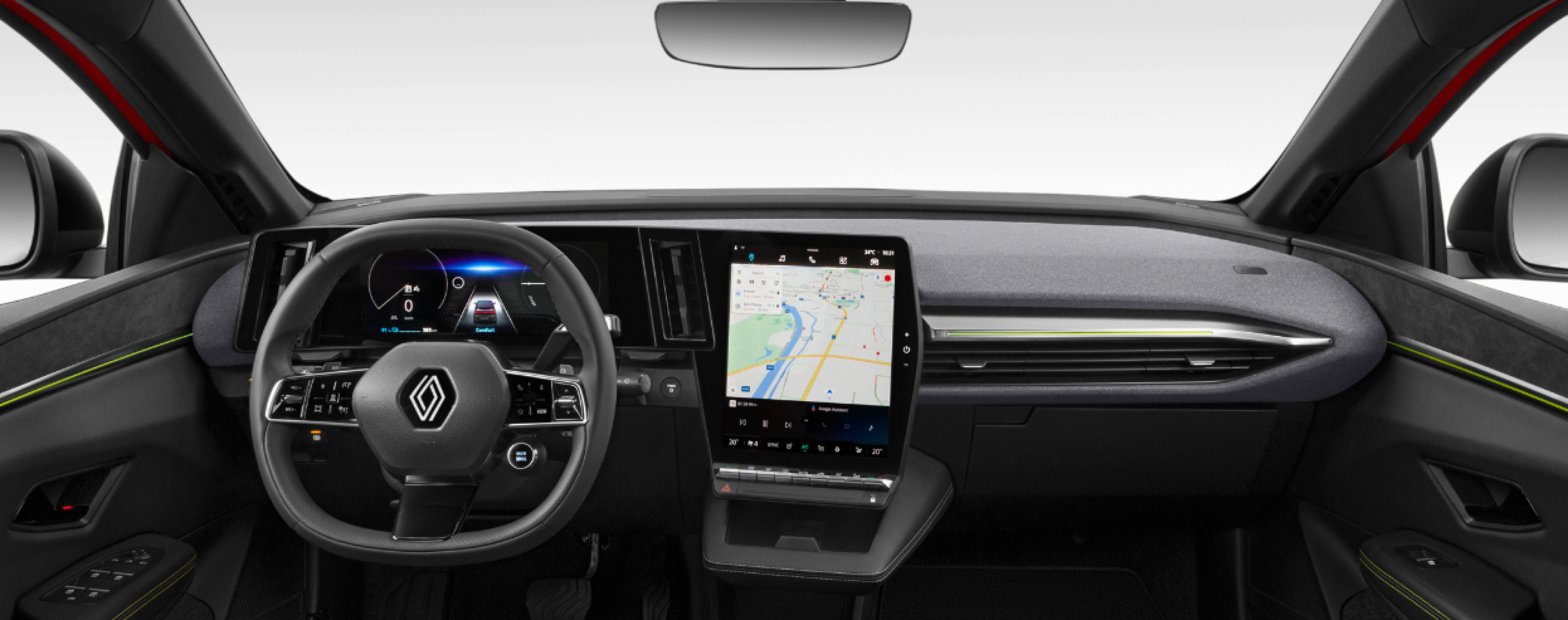
| EXTERIOR | INTERIOR |
|---|---|
| 20-inch soren two-tone alloy wheel rims | Recycled fabric dashboard cover |
| Shark fin antenna | Black headlining |
| Two-tone paintwork | Yellow contrast stitching on the upholstery & front door armrests |
| Automatic electric flush-fitting front door handles | Alcantara-style front door trims |
| Front/rear body-coloured F1-style blades | Chrome strips on dashboard, front & rear doors |
| Striped exterior door protection |
| COMFORT | |
|---|---|
| Recycled fabric and leatherette upholstery with yellow contrast stitching | Welcome sequence |
| Heated front seats with 3 heat levels | Multi-sense: customisation of driving modes (custom/comfort/sport/eco) |
| Height-adjustable driver and passenger seat with electric lumbar adjusent for driver | Interior ambient lighting with 48 available colours |
| Heated steering wheel | u2018Living lightsu2019 – automatic ambient lighting colour change every 30 minutes |
| Automatic dual zone climate control system with air purifier | Rear privacy glass |
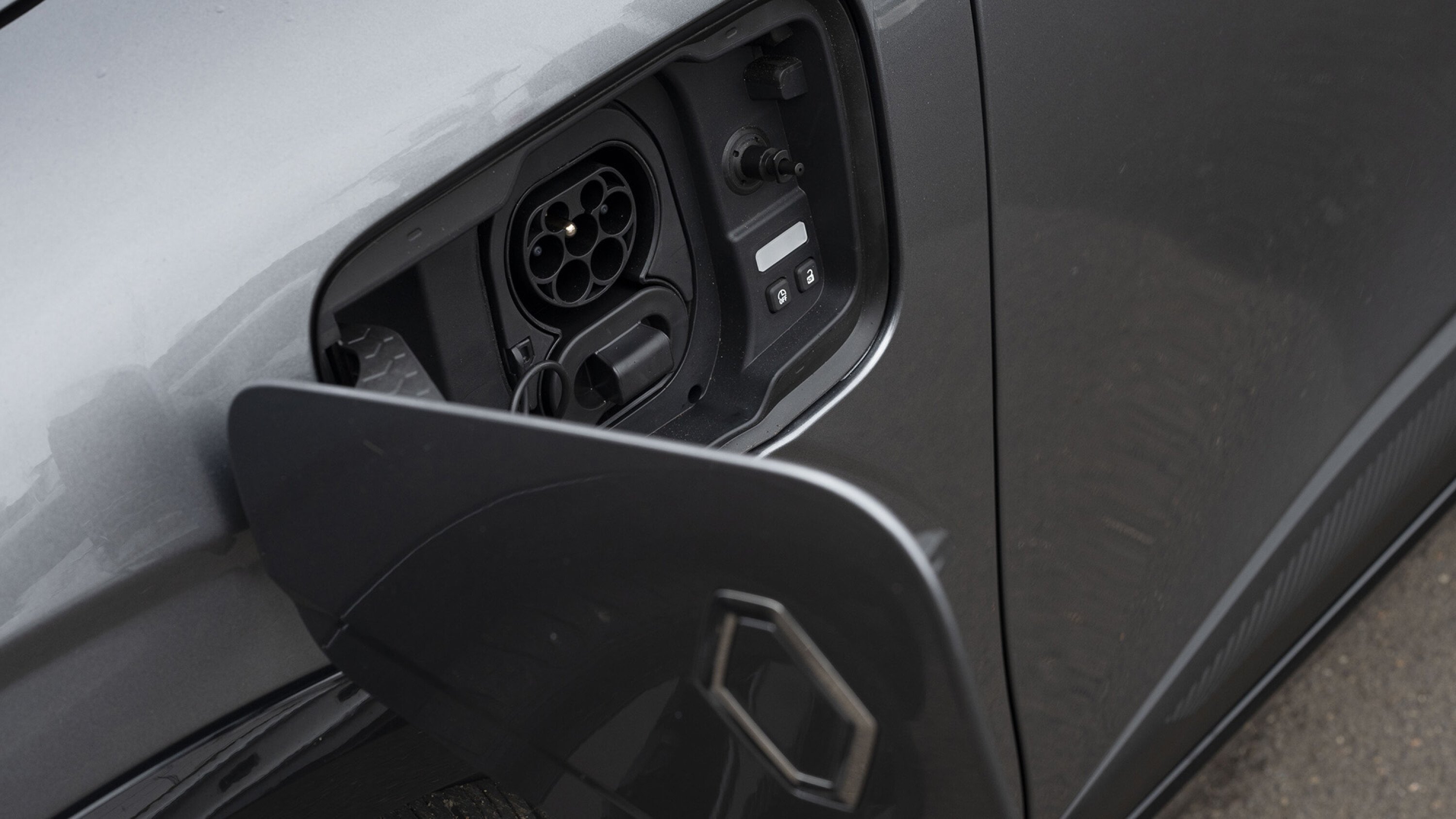
| INFOTAINMENT | |
|---|---|
| 12.3-inch high-definition digital driver instrument cluster | Wireless Android Auto and Apple CarPlay |
| 9-inch OpenR: multimedia system | Wireless smartphone charger |
| Digital radio | Arkamys Auditorium sound system with six speakers |
| Bluetooth phone pairing with audio streaming | 2x front and 2x rear USB-C ports, 1x 12V socket |
| CONVENIENCE | |
|---|---|
| Renault smart key with hands-free unlocking and walk-away locking | Sliding central front armrest with closed storage and rear air vents |
| Auto door-lock when driving | LED Cabin lighting |
| Automatic windscreen wipers with rain sensor | Driver & front passenger sun visor with illuminated mirror |
| Automatic dusk-sensing headlights | Customisable storage in centre console |
| Automatic high/low beam | Boot lighting |
| Four electric one-touch windows with anti-pinch | Charging cable storage in the boot |
| Electric parking brake with auto-hold function | Heated power-adjustable and auto-fold door mirrors |
| Split folding rear bench seat 60:40 | Tyre repair kit |
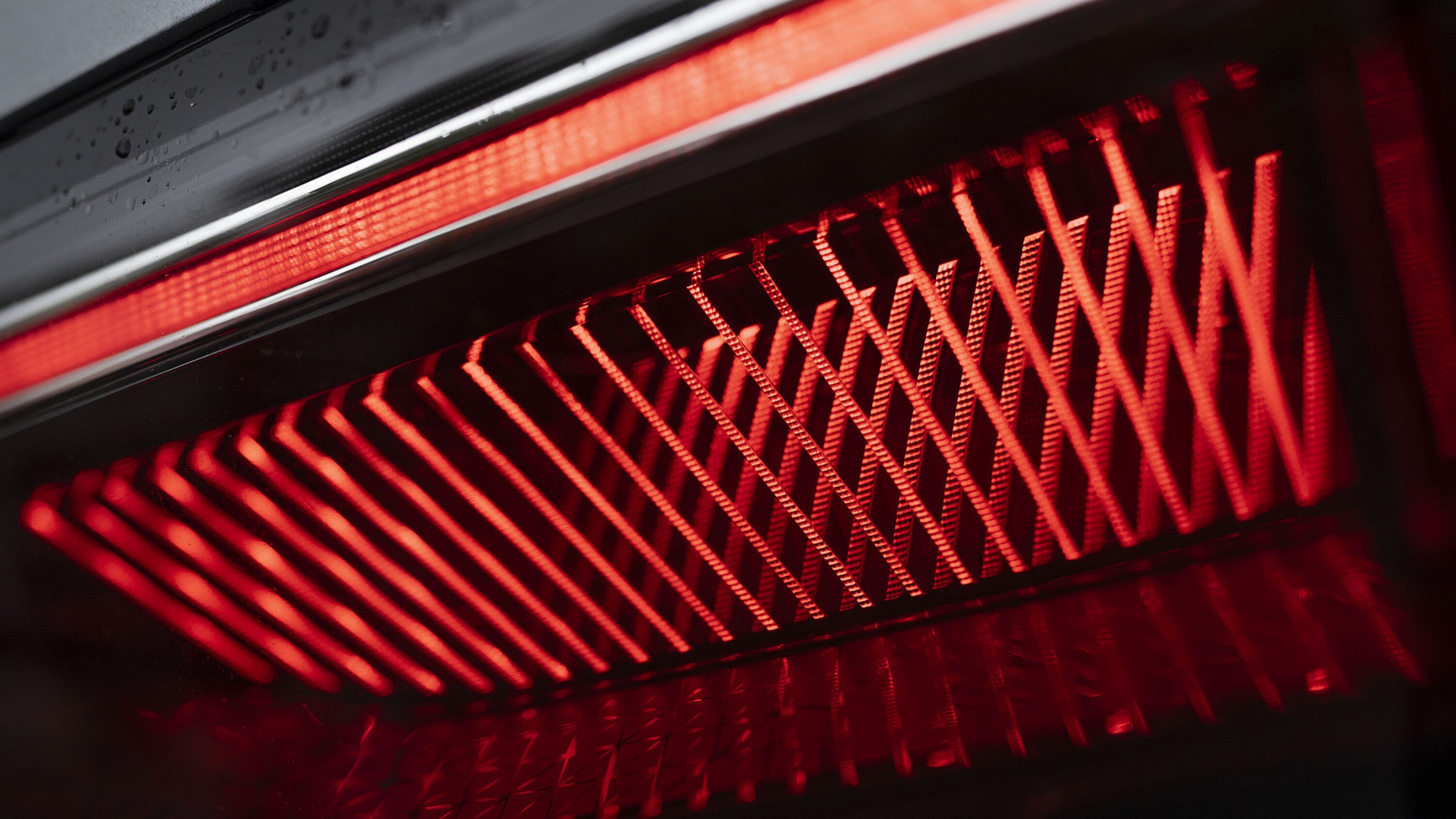
| LIGHTING | |
|---|---|
| 100% LED adaptive front headlights: Renault LED Pure Vision with fog light function | 3D rear lighting signature with moiru00e9 effect |
| LED daytime running lights with lighting signature | Puddle lights with Renault logo projection |
| ELECTRIC | |
|---|---|
| Mode 3 charging cable (5m) | Charging scheduling via the openR multimedia system |
| Regenerative braking (four levels) adjustable by paddle shifter on the steering wheel | Eco coaching – (driving tips to maximise your range and save energy) |
Power, charging and driving range
The single-spec Megane E-Tech EV60 is powered by one electric motor at the front, driving the front wheels only.
The motor produces 160kW and 299Nm, drawing energy from a 60kWh lithium-ion battery pack supplied by LG Chem. Renault and LG claim this is the slimmest battery pack on the market, at just 110mm tall.
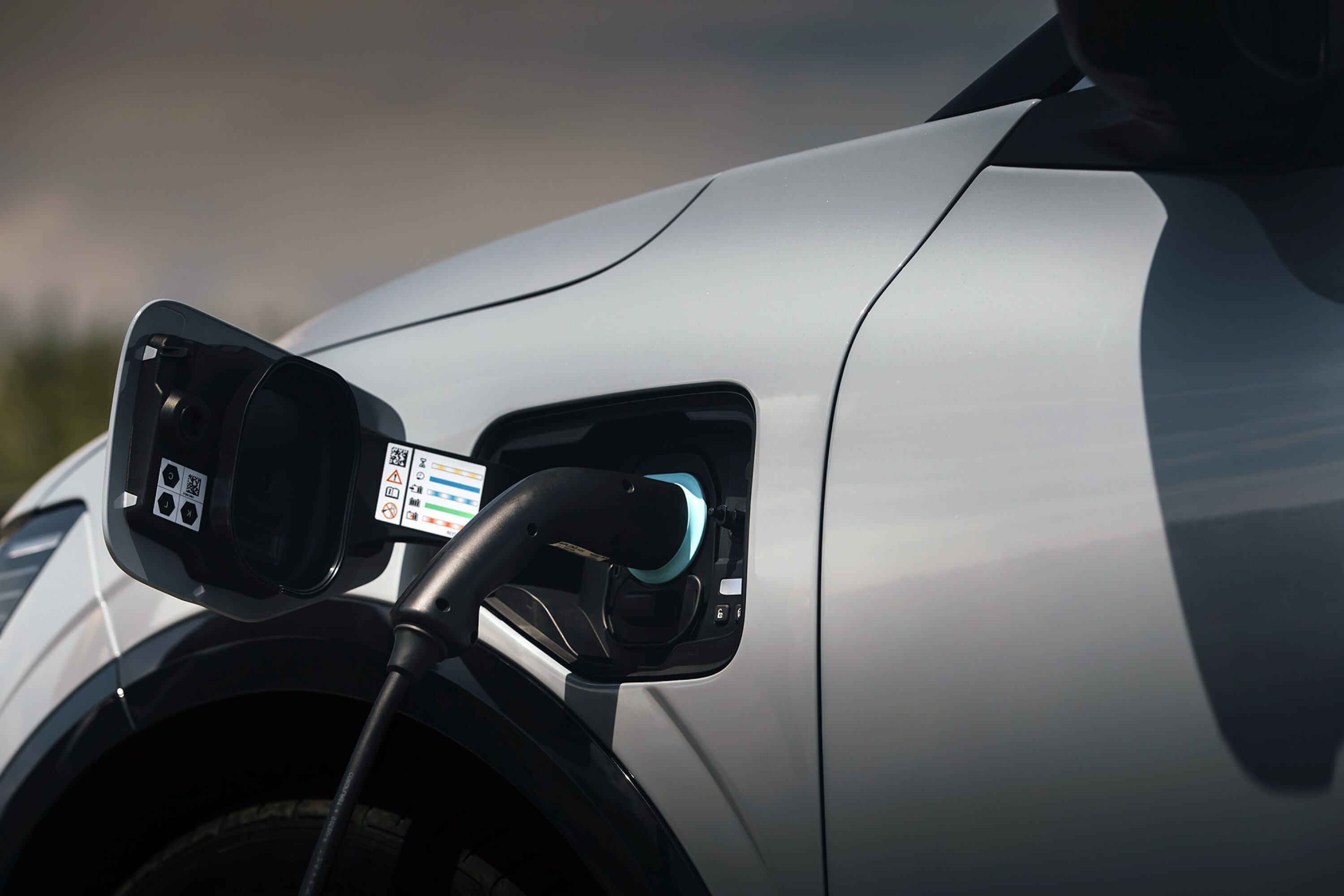
With an official efficiency rating (WLTP) of 15.6kWh/100km, Renault claims a driving range of up to 454 kilometres for the Megane E-Tech, and a 0-100km/h time of 7.4 seconds.
Built on a 400V architecture, the Megane E-Tech will charge at up to 130kW DC, but AC charging is limited to 7kW. No three-phase 22kW advantages here, meaning the fastest full AC charge you’ll get at home or any small ‘destination charger’ will be 9 hours 15 minutes. With DC charging, you’ll get from 15 to 80 percent in 30 minutes.
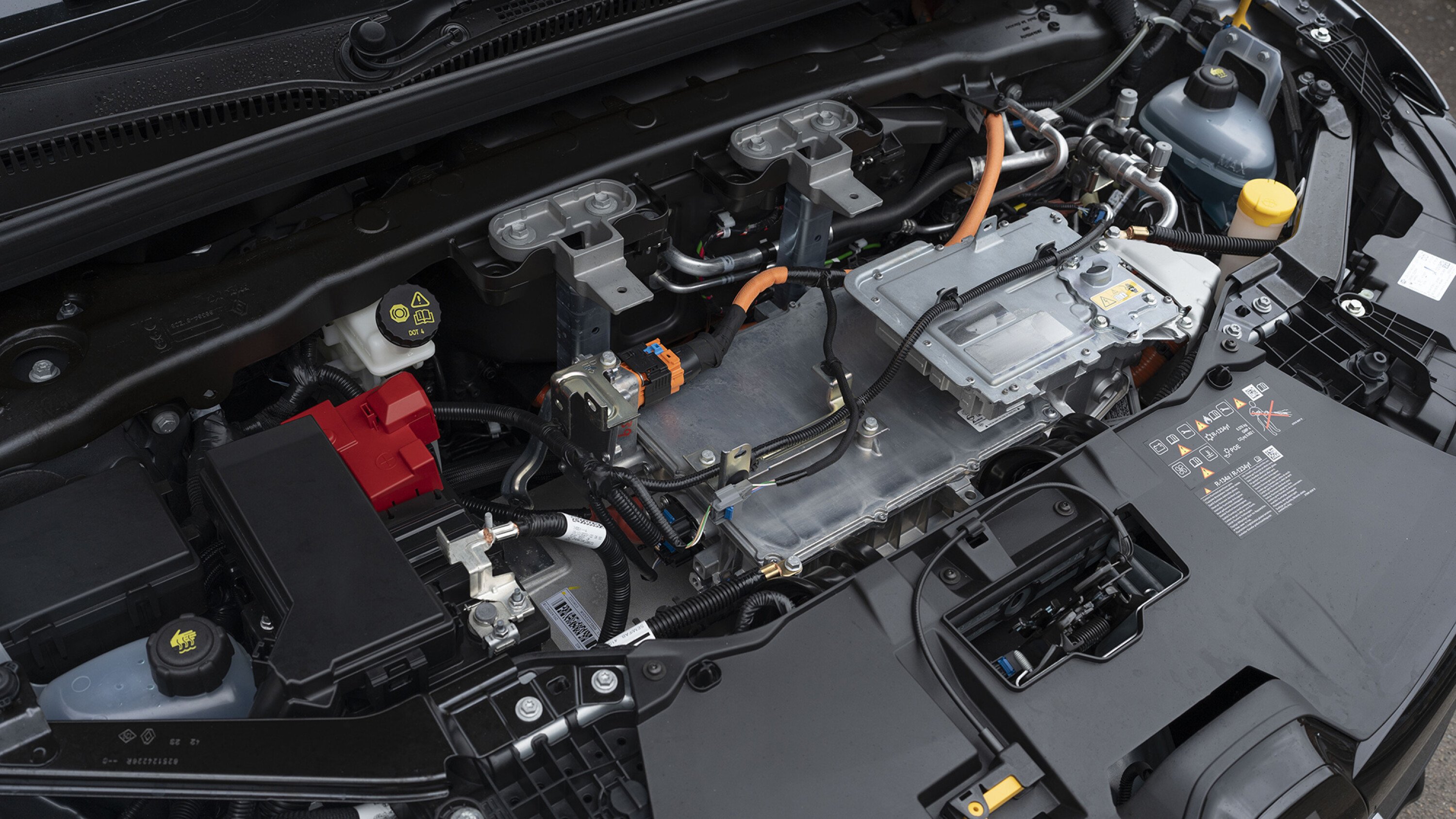
Where is this model in its lifecycle?
This is the Megane E-Tech’s Australian debut, but it was unveiled to the world in September 2021. That should see a mid-life facelift and tech upgrade come in either late 2024 or sometime in 2024.
Here, the Megane E-Tech replaces the conventional Megane hatch and wagon range, along with the smaller Zoe EV that launched for private buyers in 2018 from $51,990 before being retired in 2020. (A facelifted and upgraded Zoe launched in Europe in 2022.)
Above: The new Scenic could offer a few hints as to how a facelifted Megane E-Tech might look…
How do rivals compare on value?
Not well, but also quite well. Decisions, decisions, decisions…
The beautiful thing about having around 60 brands to choose from in Australia is that you’ll generally find a car that mostly suits your needs and desires – but it also means you’ll be making compromises and some tough decisions.
In the case of the Megane E-Tech, your $65k spend (plus on-road costs) gets you a richly equipped European car with loads of flair and a powertrain developed by one of the continent’s better-regarded practitioners of electrification.

If it’s space or speed you prioritise, you could be better served elsewhere for similar money.
The Polestar 2 RWD can be had from $67,400 with arguably as much style and 0-100km/h time a full second quicker (6.4 seconds to the Megane’s 7.4). Its standard features make for a nice start and it’ll take you further (532km to 454km), but getting to the Megane’s level of included equipment and safety means adding the $3500 Pilot pack and the $6000 Plus pack.
You won’t gain any meaningful interior space, but there are other reasons you might be better off with the Chinese-made Swede, so take a look at our Polestar 2 details here.
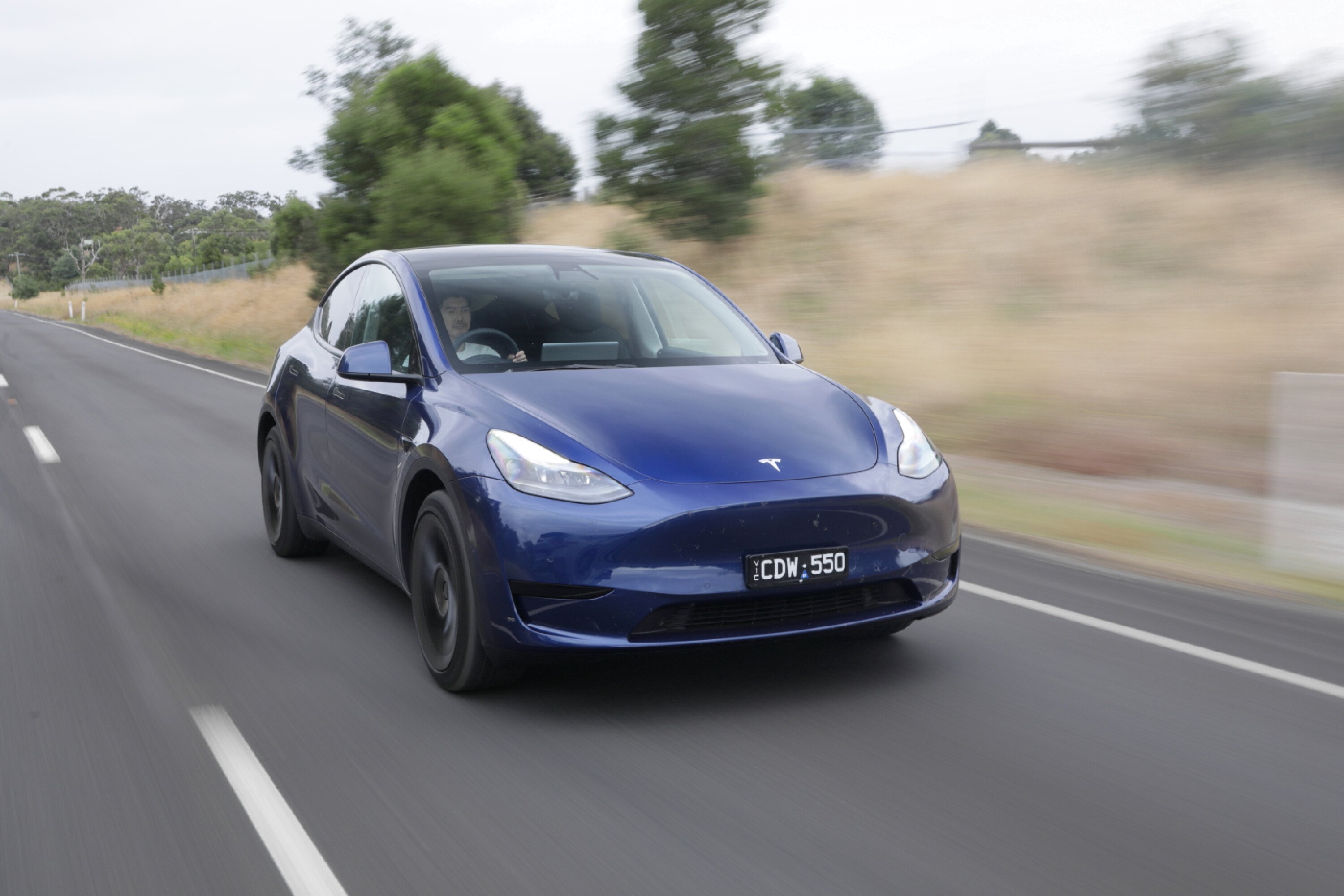
Pricing for Tesla’s Model 3 and Y changes with the weather, but right now the Model Y RWD is priced from $65,400 and it’s a well-equipped thing.
You’ll get most of what the Megane lists, plus electric seats with faux leather trim, if those omissions in the Megane were indeed dealbreakers for you. As a midsized SUV, it’s also more spacious than the Renault – although the Megane does have good rear legroom for its overall size.
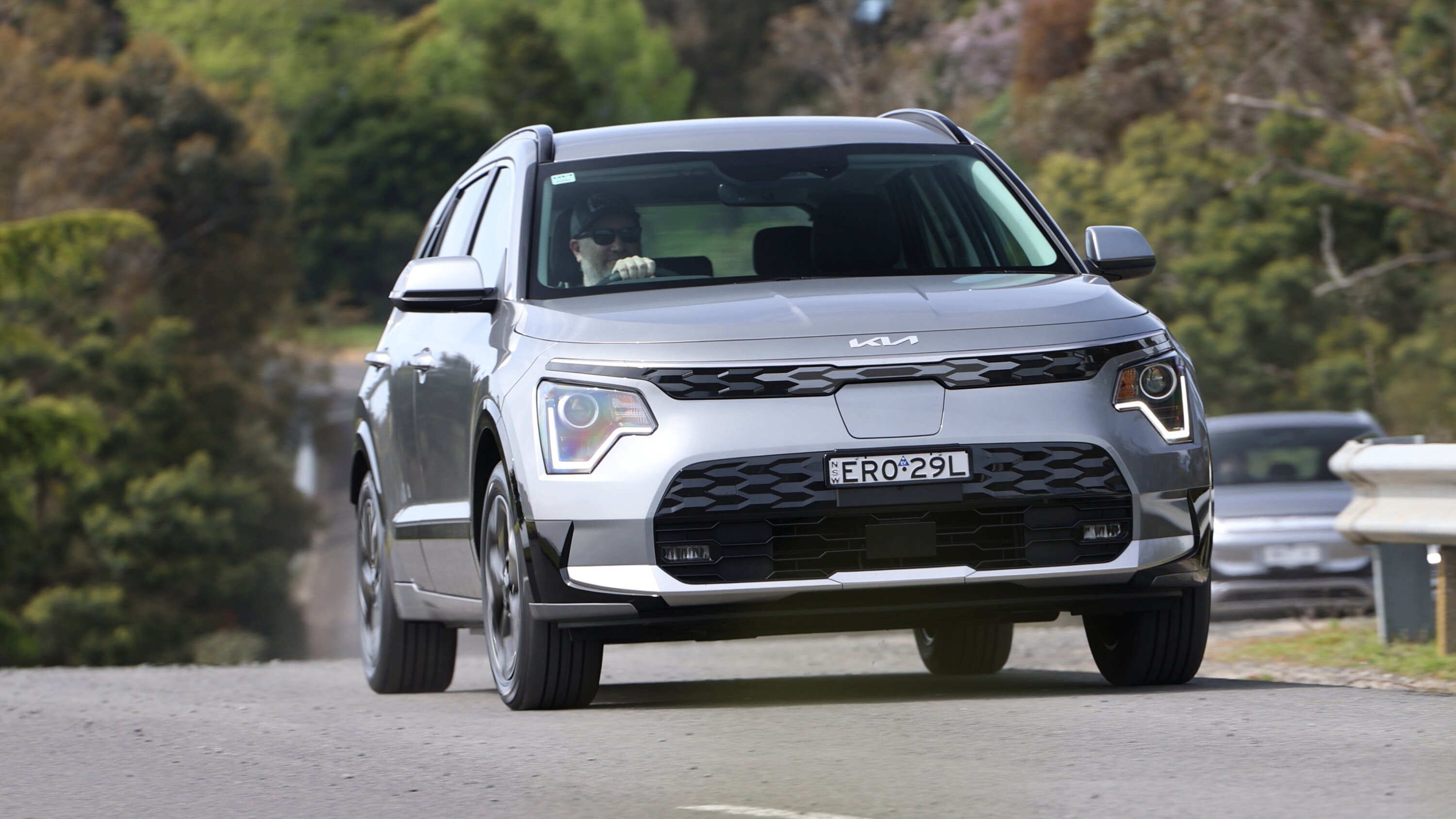
The Kia Niro EV was slugged with a $1290 price rise for 2020, making it $66,590 in base trim.
It gained more tech, however, picking up a proper full digital display, integrated satnav and remote connectivity through Kia Connect. Interior space and storage is excellent, feeling more like a medium SUV than its official small classification. The standard equipment list is also strong, along with a comprehensive included safety suite, but it’s otherwise the least exciting model in this set.
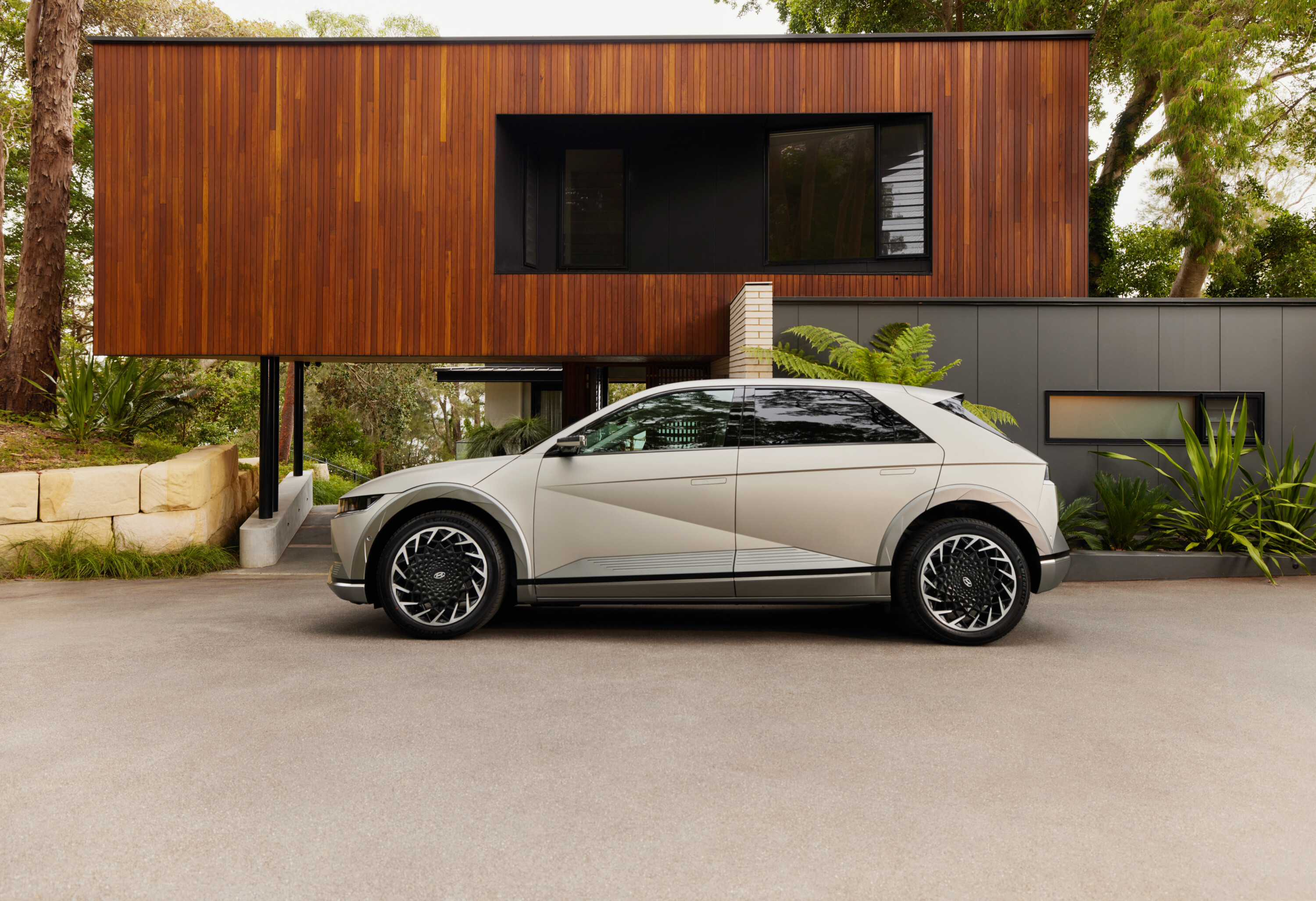
The last model I’ll touch on here is the utterly massive Hyundai Ioniq 5, which dropped to $65k in October 2023, while gaining much improved supply into our market.
The entry RWD model ‘only’ claims 384km of range, but you’ll get 800V ultra fast charging, large-SUV interior space with a huge boot, and a strong standard equipment list. Bump your spend to $70k and you can have 507km of range.
Now, back to the Renault.

Interior quality, comfort, space and storage
Stylish, comfortable, and surprisingly roomy.
The Megane E-Tech presents with a modern and stylish interior, but it’s not the premium space the brand would like you to imagine.
Fit and finish are no more premium than its price rivals – let alone the markedly cheaper Kona Electric and BYD Atto 3 – but the reality is that most modern cars deliver in this area.
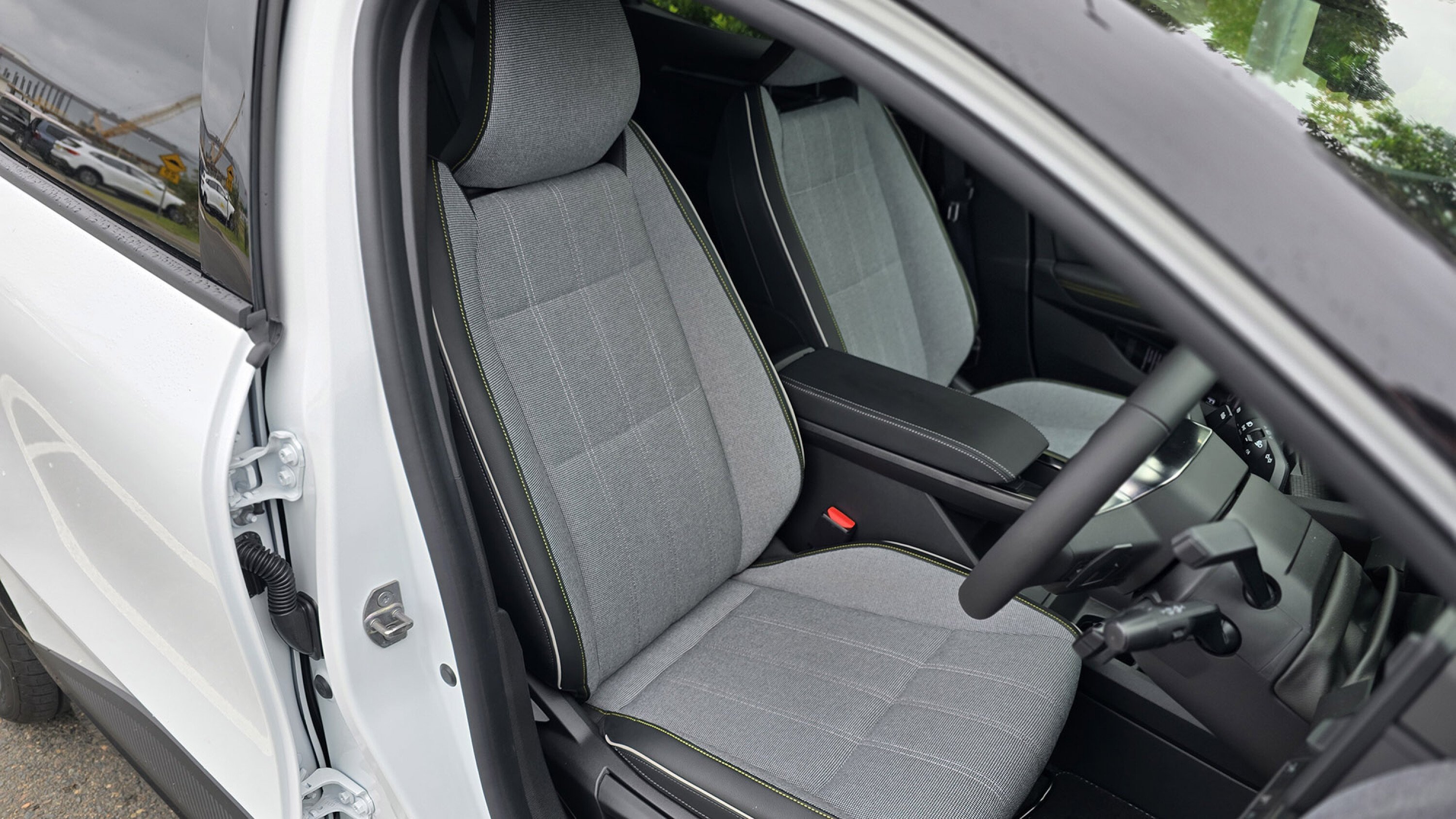
The large, plain, unadorned plastic panel surrounding the tiny overhead lights seems particularly uninspired and budget-focused, as does the plain, seemingly unfinished power button in the equally plain dash panel.
Renault would perhaps describe these as intentionally minimalist touches, focused on sustainability – but the finger smudges around the button in our test car didn’t scream thoughtful design.
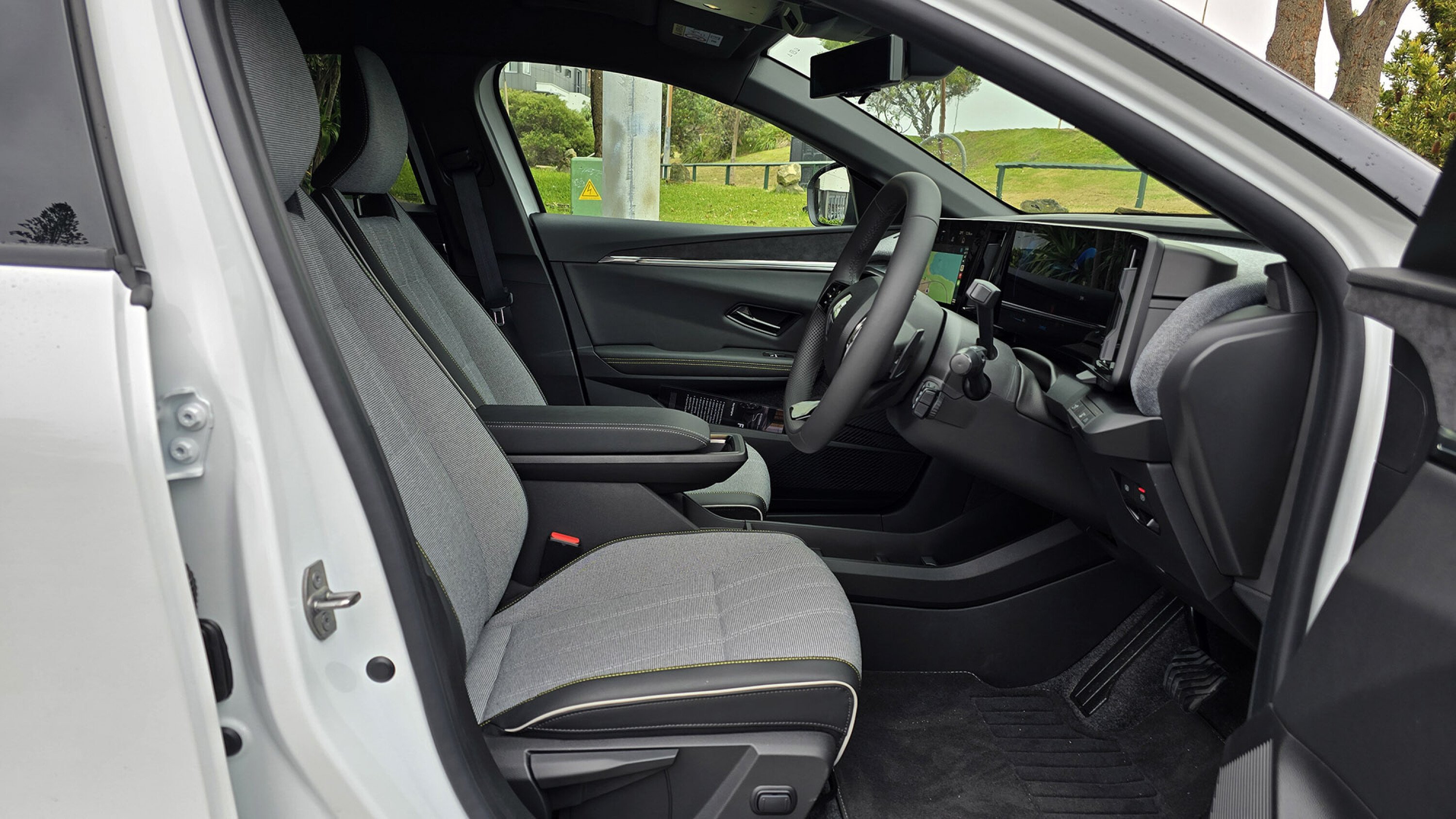
Recycled materials
The Megane E-Tech follows a few of its rivals with a liberal use of thoughtfully recycled materials in the cabin, from the nice textile cloth on the dash and seats to the faux leather and suede panels in the doors and bolsters, to the flocked door pockets – and the hard plastics that feature throughout the cabin.
$60k would once get you a few more soft surfaces at common touch points, but not so much in the EV era. In fact, the only real leather in this car is the Nappa trim of the steering wheel and arm rest. Frequent contact surfaces.
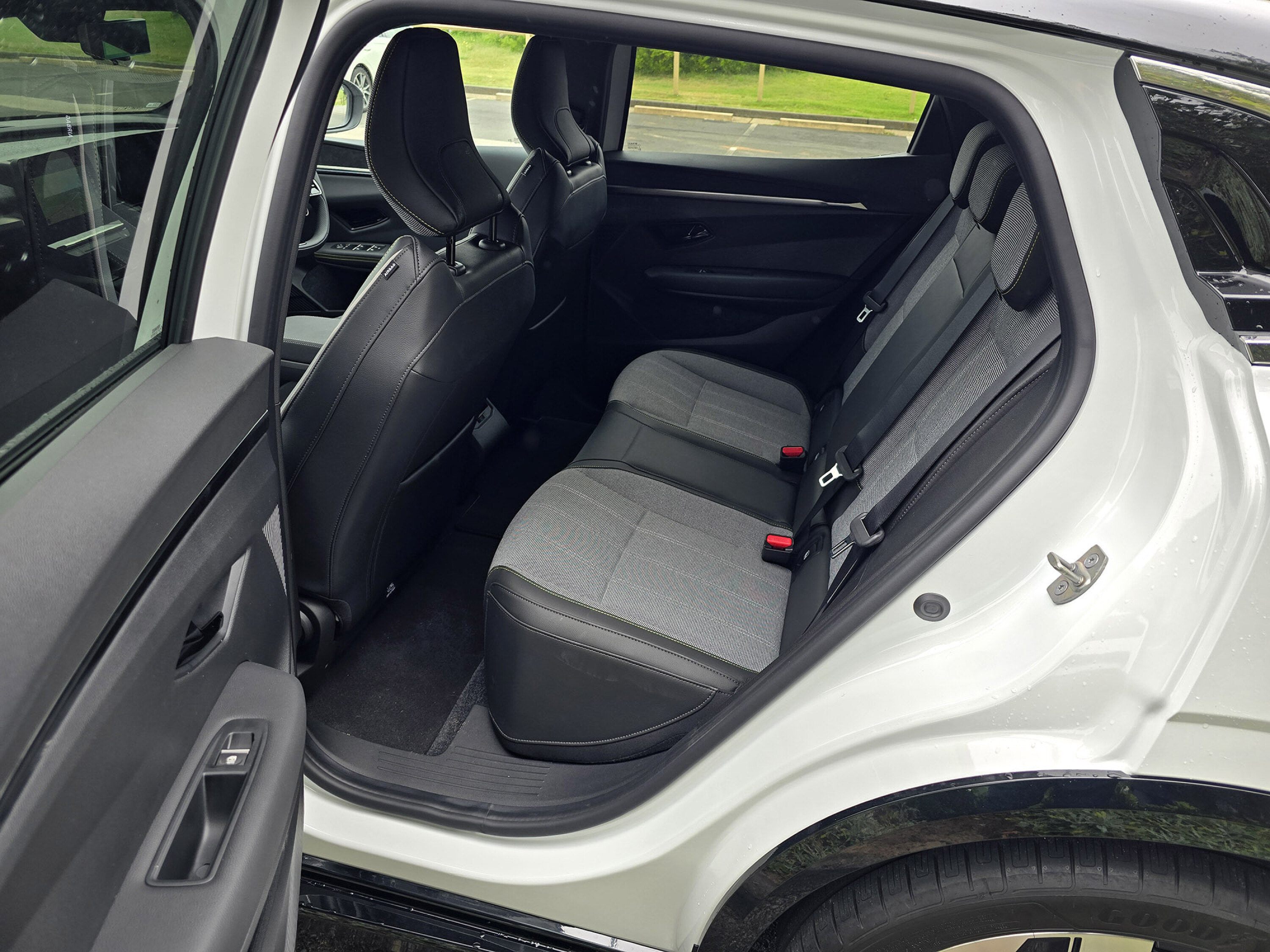
Interior space
Space in the front row is about standard for a small car, with decent legroom and enough shoulder room to comfortably share the centre armrest without feeling a little too intimate. There’s no sunroof to eat up space, so headroom is likewise good.
Like most new EVs, the Megane E-Tech uses its electric platform to good effect for maximising passenger space.
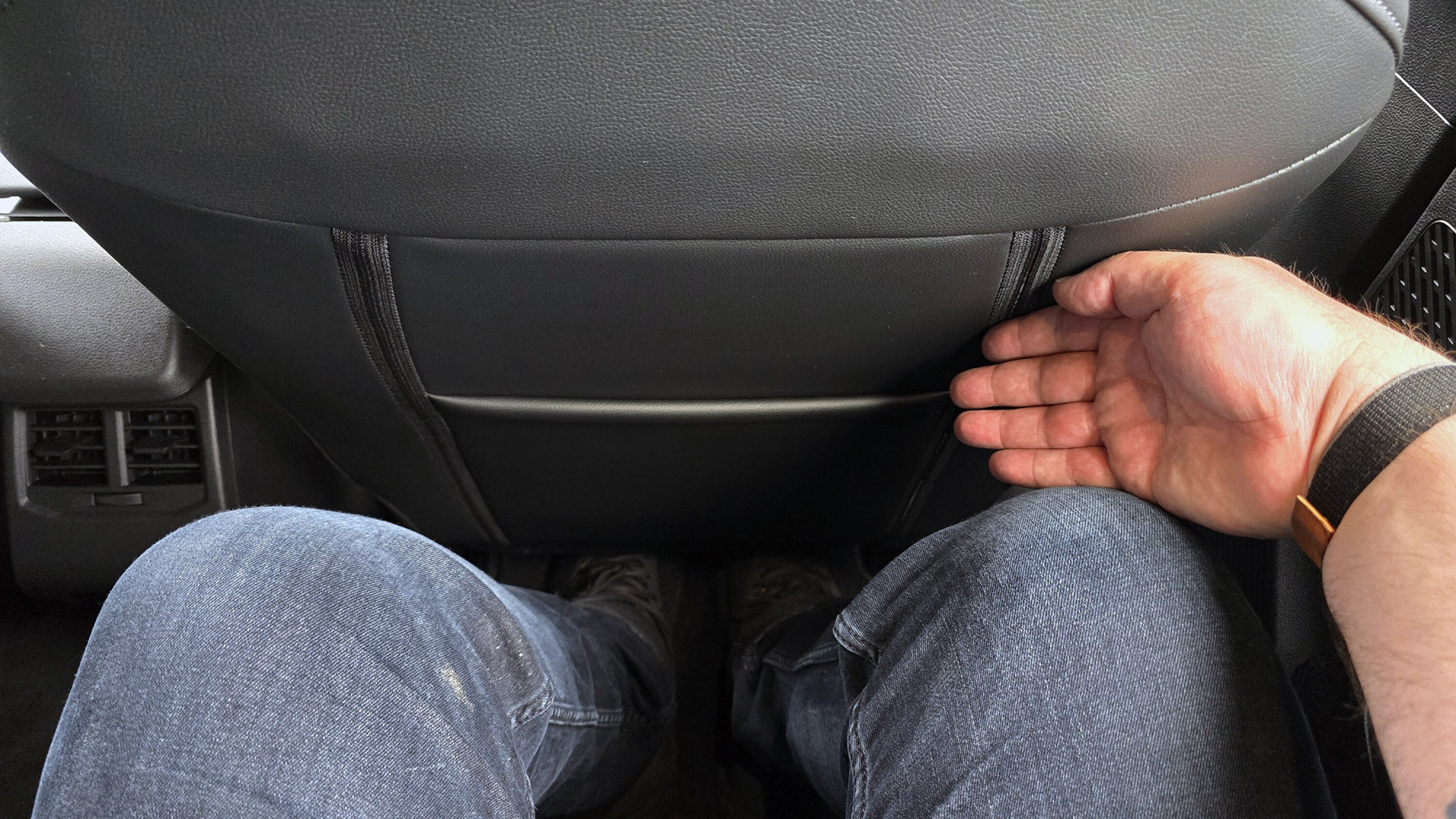
With a 2665mm wheelbase – 20mm longer than the Megane hatch it replaces – this new generation offers more rear legroom than its predecessor, despite being 150mm shorter overall on the outside.
At 5’9” (175cm), I have a hand’s width between my knees and the driver’s seat in my own position, along with a little – not generous – wiggle room for my toes beneath the seat.
Storage in the cabin is generous, with reasonably wide door pockets, a deep cubby beneath the arm rest, two cup holders – one of them adjustable, positioned in the large open tray where a transmission tunnel would otherwise live. (Gears are shifted with a stalk on the steering column.)
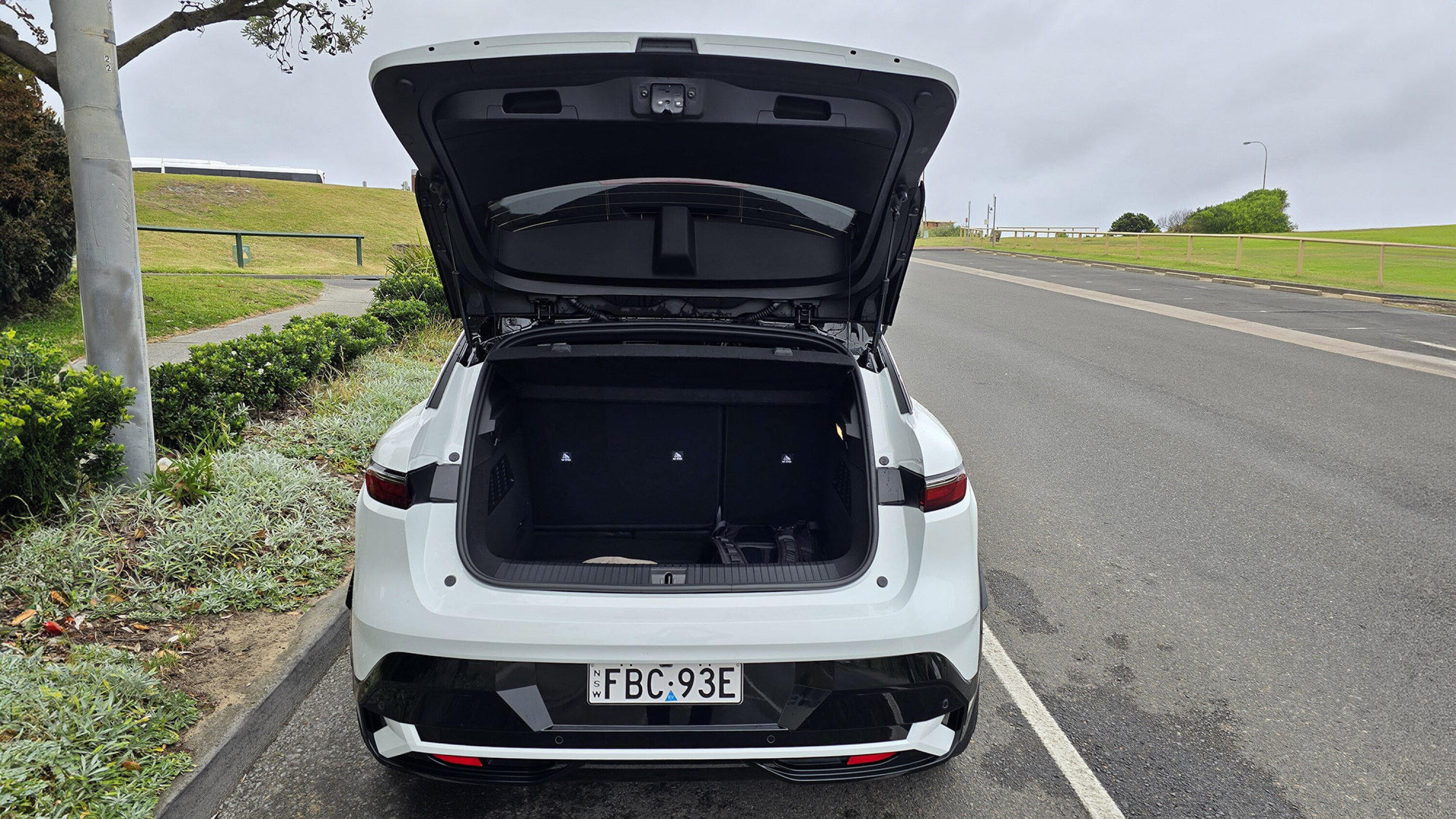
Boot space
As with that space in the second row, the Megane E-Tech’s boot is actually 10 litres more capacious than in the previous Megane, with 440 litres available in a deep space behind the rear seats.
The rear seats fold in a 60:40 configuration (60 on passenger side) to reveal more boot space, expanding to a useful 1332 litres.

There’s a high loading lip, however, so lifting heavy items out will require some thought for your back.
There’s no spare wheel, and as with those front seats, the tailgate isn’t powered.
You’ll also miss out on a ‘frunk’ (storage under the bonnet), because that’s where the motor is. It saves around 100kg in cables and cooling, at least.
Mini matchup: Boot space
| MODEL | WHEELBASE | BOOT | u2018FRUNKu2019 |
|---|---|---|---|
| Megane E-Tech | 2665mm | 440-1332L | No frunk |
| Polestar 2 | 2735mm | 405-1095L | 35L |
| Tesla Model Y | 2890mm | 854-2158L | 117L |
| Kia Niro | 2720mm | 475-1392L | 20L |
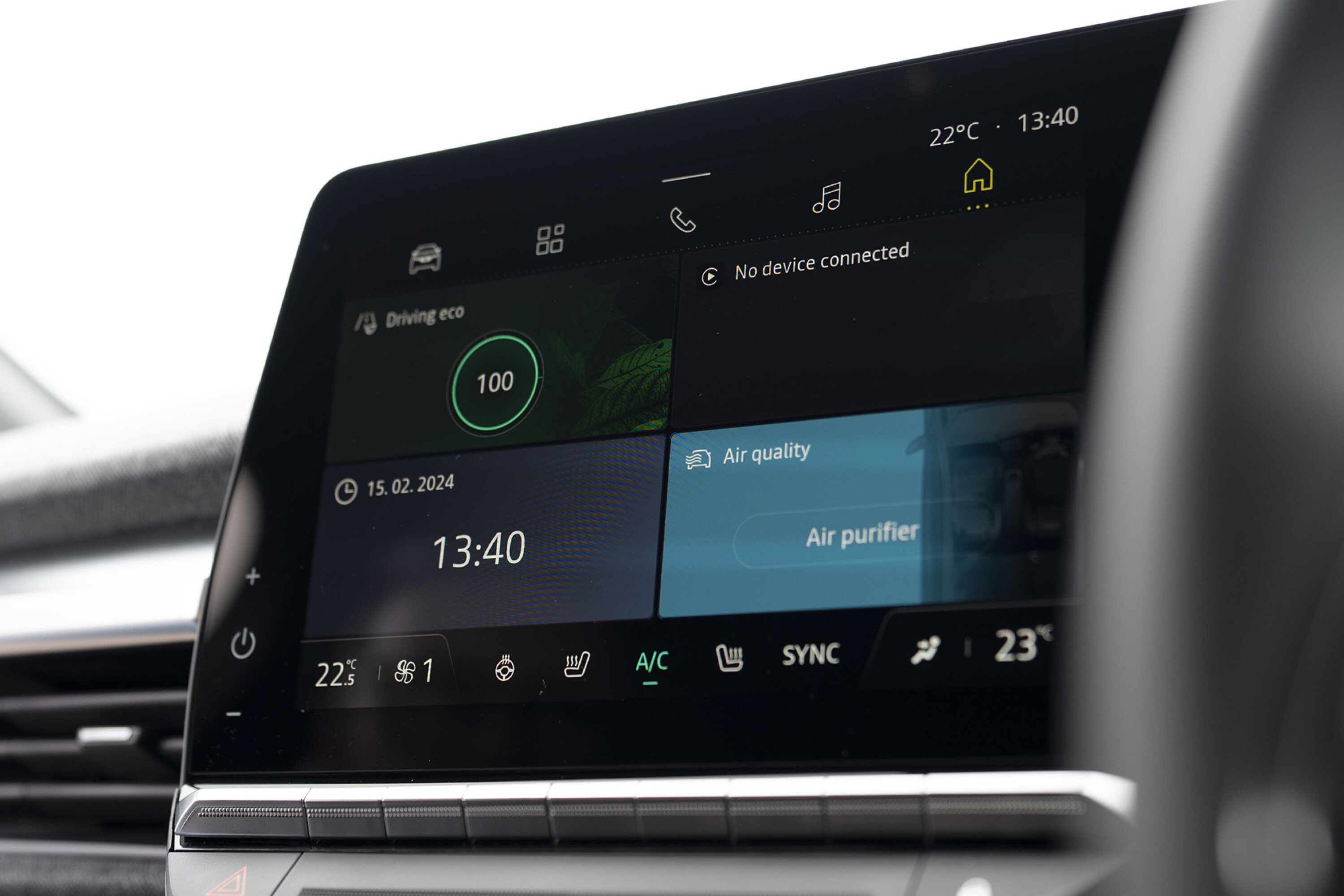
Technology in the cabin
Wireless connectivity, stylish graphics and physical switches galore
The Megane E-Tech’s two digital displays measure 12 inches for the driver’s instrument cluster and nine inches for the main screen. The larger 12-inch centre display offered in Europe isn’t available with right-hand-drive models; likely as a cost-saving measure. This means any buyers who might’ve stopped in at a Tesla or Polestar showroom before looking at the Megane will notice it’s a much smaller screen – for those who care about such things.

Size aside, the Megane’s Android Automotive-based RLink infotainment system is fast, responsive and very high resolution.
There’s wireless connectivity for Apple CarPlay and Android Auto matched to a wireless charging pad beneath the screen – although I noticed my Samsung Galaxy S24 Ultra phone lost more charge than it gained while using this pad and running Android Auto.
Neat features of the infotainment system include a driving score with tips for efficient energy use (I was given a four out of five, with advice to accelerate less…) and a window in the driver display that shows how many seconds’ space you’re maintaining between you and the vehicle in front.
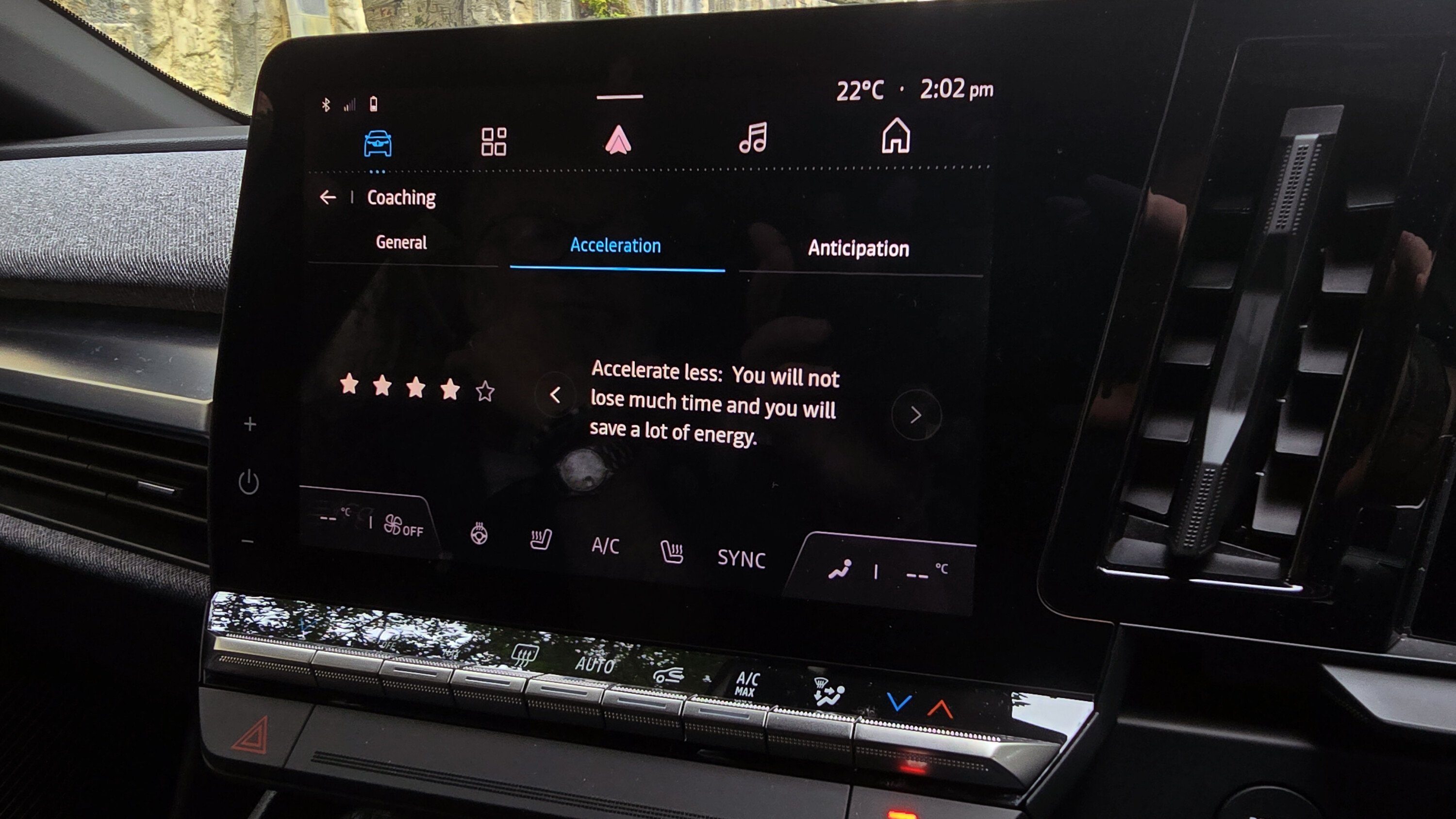
Heating and cooling is managed by toggles beneath the display ( you should note Europe’s larger screen does away with these switches), and rear passengers get vents in the back of the centre console – but no USB charging ports of their own.
A set of the usual controls are featured on the squircle-shaped steering wheel, but you’ll still need to adjust volume with the small controller that juts out from the lower side of the steering column.
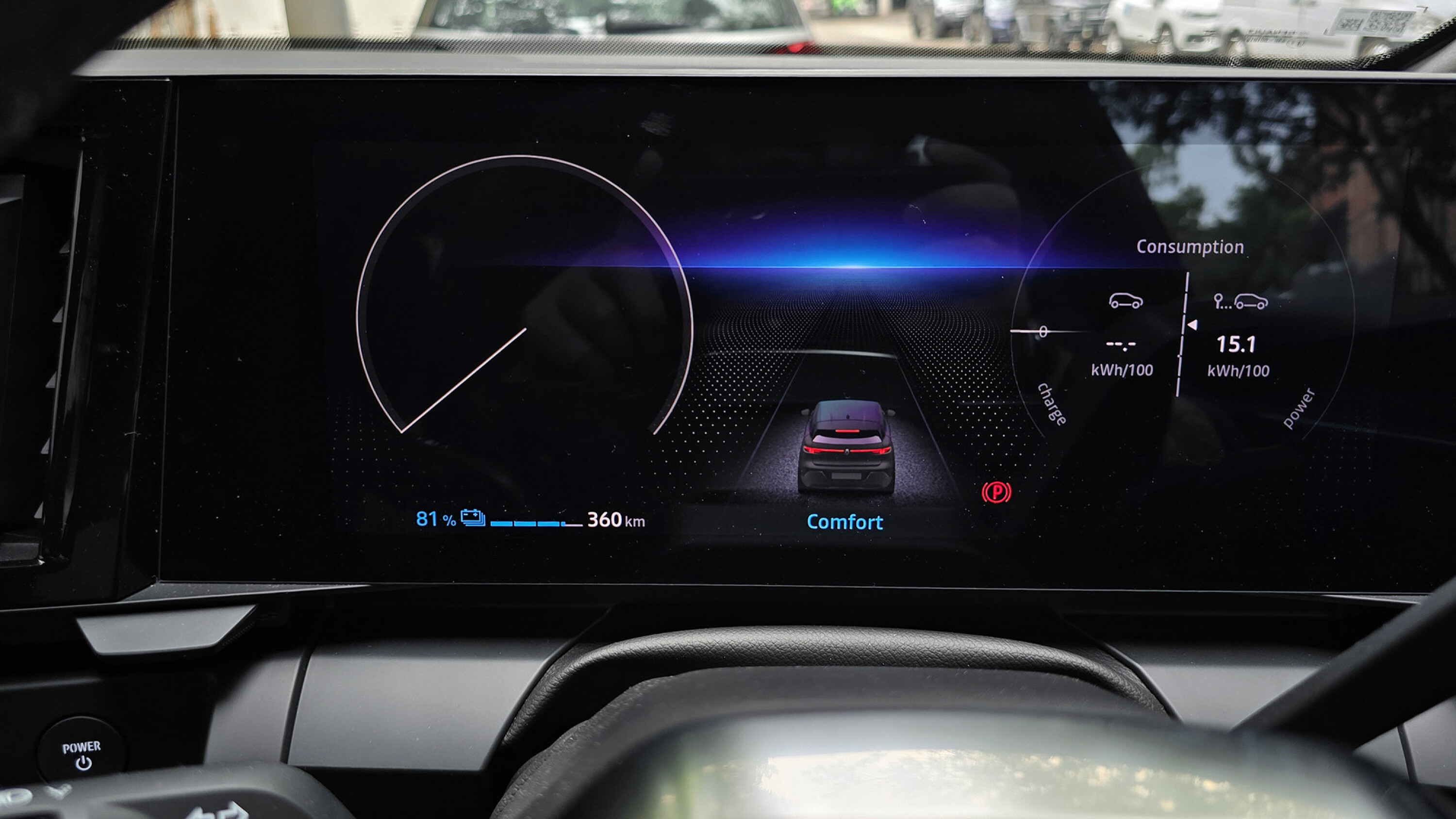
What is it like to drive?
Our launch-day test consisted of a ‘choose your own adventure’ opportunity to fill about three hours however we could, starting out from The Revy in the centre of Sydney.
I put my driving partner, a Sydney native, in charge of our destination. “Have you been to La Perouse?” he asked. I hadn’t, so off we went. Nearly an hour later, we’d travelled the 18km to the site named for French naval captain Jean-François de Galaup, comte de Lapérouse. From there we trekked to North Sydney over the Harbour Bridge, before making our way back to Pyrmont while avoiding the M1 tunnel that had been closed by a car fire. [↗]

Some things to know about the Megane E-Tech, the car that “feels like a GTI” – its centre of gravity is 90mm lower than the petrol Megane’s, thanks to an overall focus on lightweighting that lets its 400kg battery pack play a useful role in dynamics.
It doesn’t accelerate like a GTI to 100km/h, but it’ll get to 60 in just under four seconds, so it’s got plenty of poke for a fun little squirt around town. Stuck as we were in Sydney’s busy and often crawling city streets, there were few opportunities for that, let alone a proper assessment of the new Megane’s dynamic potential.
One thing we had plenty of time to assess when not poking at the dashboard while waiting for traffic, was ride quality. Where we couldn’t find long and empty winding roads, we did find plenty of potholes, expansion joints and broken surfaces – and the word is good.
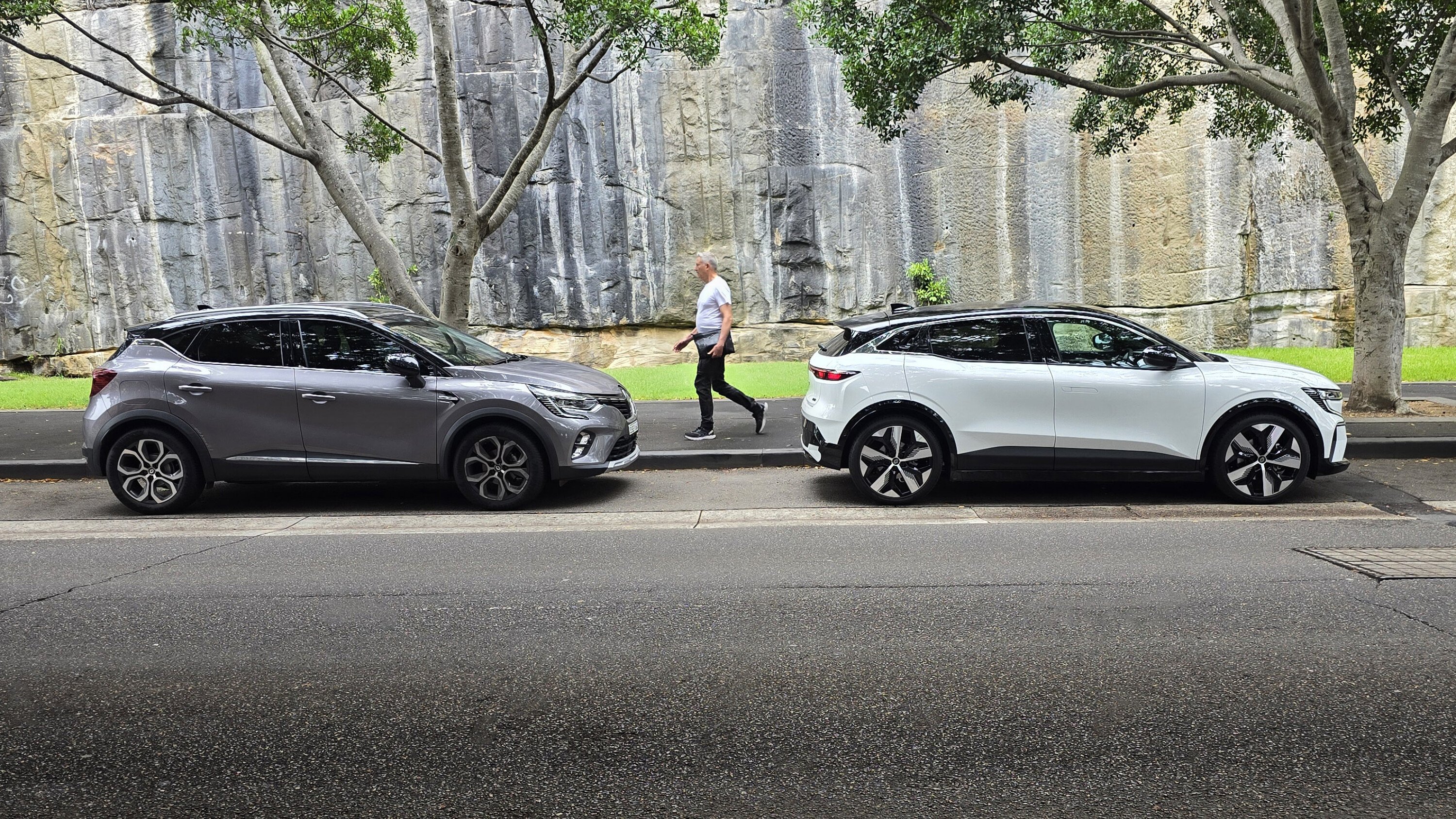
The ride is firm on those 20-inch wheels and sports-focused suspension tune, but in the right ways. You’ll feel every bump beneath you, but it won’t jar.
The ride settles quickly and assuredly, highlighting the difference between Renault Sport and retched suspension. The firm but comfortable front seats also help in this regard, with decent bolstering below and behind.
Steering is likewise confidence inspiring, with a surprisingly direct connection – just as Sealey promised – and good on-centre feel in highway driving. There seems little doubt the Megane E-Tech would be a properly fun drive in the right conditions, but we’ll have to test that another day.
The steering-mounted ‘Multi Sense’ button unlocks other driving modes, from a conventional eco mode to a suitable Sport mode that opens the door to that 7.4-second 0-100km/h claim. Feels quicker than that in the seat of the pants, as EVs often do.
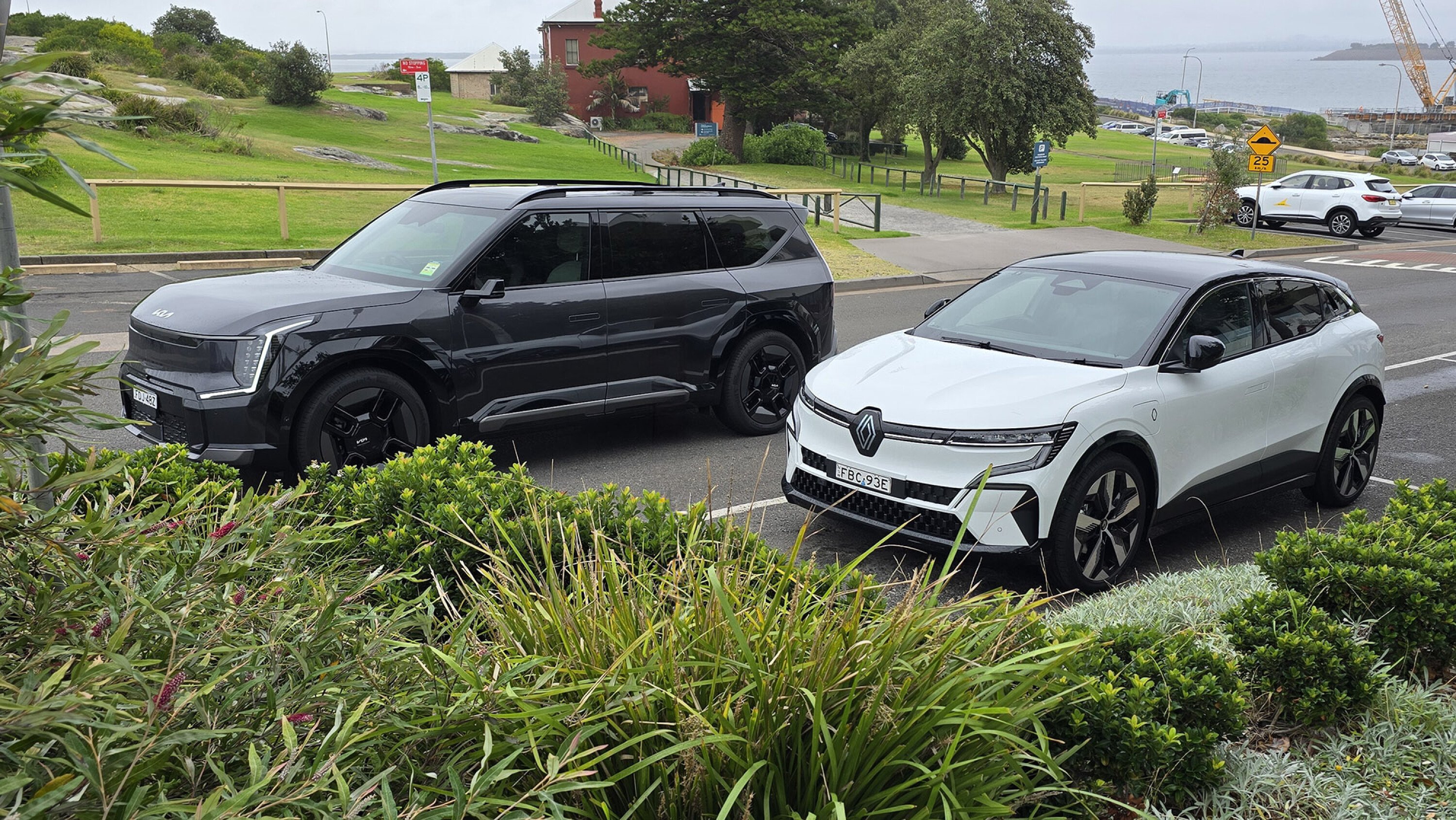
Brake-regeneration modes are adjustable via the paddles behind the steering wheel, useful in regular driving for conserving efficiency and in Sport mode for a sense of trail braking in corners.
Alas, there’s no true one-pedal mode, with the heaviest regen level merely slowing you to a crawl. A proper press on the brake will still be required.
Insulation is fine if not impressive. The sounds of road noise, wind noise and passing cars are all kept from the cabin reasonably well, but perhaps not to the “real cocoon” levels Renault claims in its media for the Megane E-Tech.
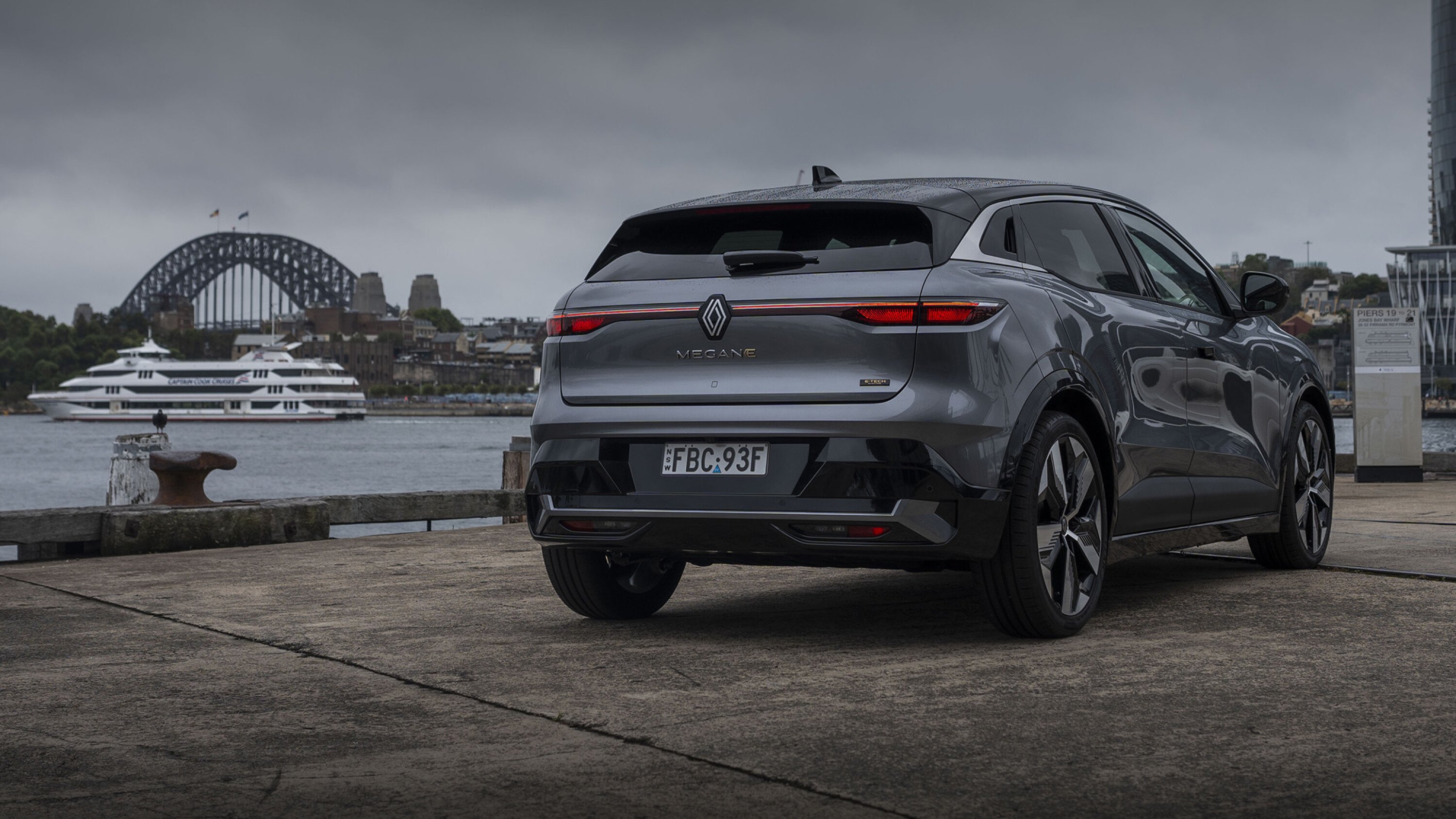
How is it on fuel?
The Megane E-Tech lists a claimed efficiency rating (WLTP) of 15.6kWh/100km.
Over 55 kilometres of largely city driving with plenty of crawling stop-start traffic and a few lengths of 100km/h tollway runs, our Megane returned an indicated figure of 15.1kWh/100km – suggesting the claimed number should be comfortably doable.
Renault claims a driving range of up to 454 kilometres for the Megane E-Tech.
As our indicated efficiency suggests, we departed with 435km indicated range in our tester, and returned with 360km indicated.
How safe is it?
The Megane E-Tech’s standard safety list leaves little to be desired, including a five-star ANCAP crash safety rating.
Highlights include smart traffic sign recognition, automatic emergency braking with junction assist and pedestrian/cyclist detection, driver drowsiness alert, emergency lane keeping assist with oncoming traffic and road-edge detection, adaptive cruise control with speed limiter, blind spot recognition and intervention, and rear cross traffic alert with rear automatic braking.
| PASSIVE SAFETY | ACTIVE SAFETY |
|---|---|
| Driver & front passenger airbags | Electronic Stability Control (ESC) |
| Driver & front passenger chest side airbags | Anti-lock Braking System (ABS) |
| Front centre airbag | Emergency Brake Assist (EBA) |
| Front & rear curtain airbags | Active emergency braking with pedestrian and cyclist detection and junction assist |
| Seat belt warning light & tone for driver & all passengers | Safe following distance warning |
| Height-adjustable front and rear headrests | Lane departure warning |
| ISOFIX child seat anchorage points on the rear outermost seats | Lane keep assist |
| 3 Child seat anchorage points for rear seats | Blind spot detection with emergency intervention |
| Child safety lock on rear doors | Cruise control and speed limiter |
| Window lock function | Adaptive cruise control with stop & go |
| Rear fog light | Traffic sign recognition with automatic adjustment of cruise control speed based on recognised speed |
| Pedestrian warning sound (3 available sounds) | Driver attention alert |
| Front/rear/side parking sensors | |
| Rear-view camera | |
| Smart rear-view mirror with camera | |
| Rear cross traffic alert | |
| Active rear emergency braking | |
| Hill start assist | |
| Tyre pressure monitor |
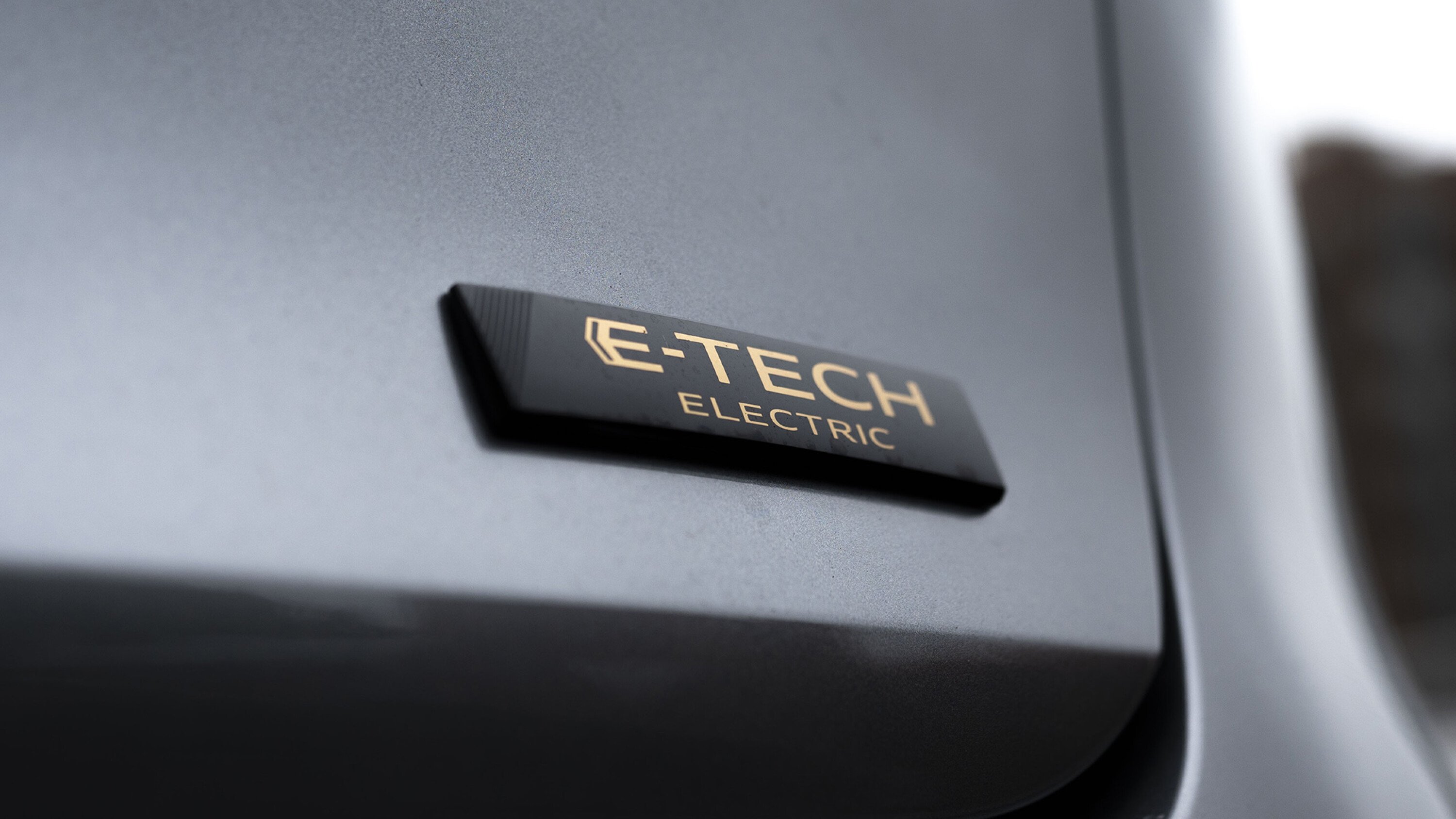
Warranty and running costs
The Megane E-Tech is sold with a standard 5-year / 100,000km warranty, and an 8-year / 160,000km battery warranty.
Servicing costs are outlined below.
| 2024 Renault Megane E-Tech servicing schedule & pricing | |
|---|---|
| 12 months/30,000km: $230.04 | 48 months/120,000km: $519.62 |
| 24 months/60,000km: $292.91 | 60 months/150,000km: $230.04 |
| 36 months/90,000km: $316 | |
By comparison, the Ioniq 5 lists a $220 servicing cost every 12 months / 15,000km, although the 48-month / 60,000km visit will cost $804.
The Polestar 2 requires a service only once every 24 months / 30,000km, and even better: the first five years / 100,000km are free.
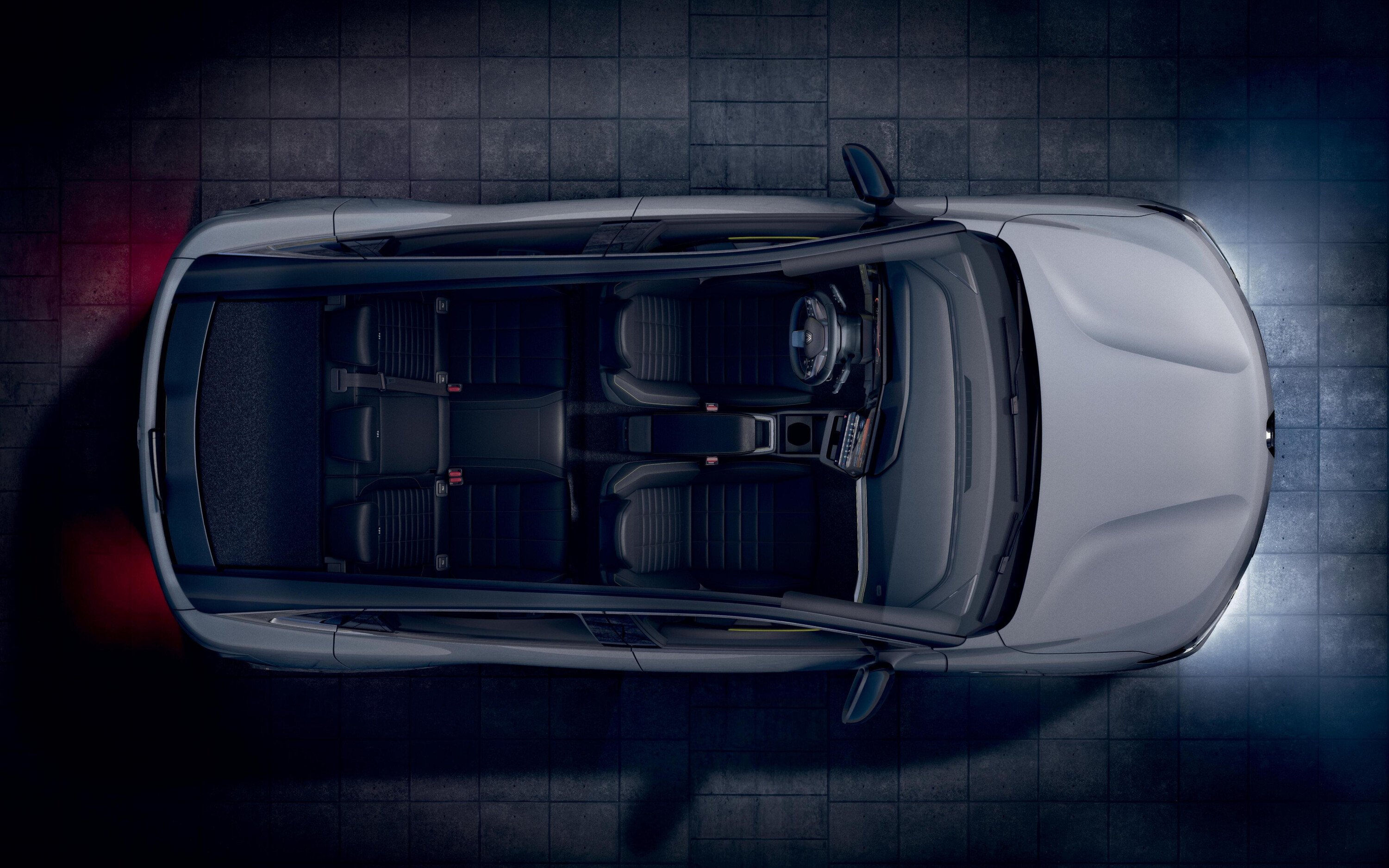
VERDICT
Loads of appeal for any driven by style, compact proportions, a sporting drive and a very rich equipment list.
It’s so often a ‘horses for courses’ conversation, and the Megane E-Tech is no exception. Those requiring more space will be better off with an Ioniq 5 or Model Y. Those looking for a more outspoken look in their compact EV will love the Polestar 2, but you’ll pay a lot more to match the Renault’s equipment list.
If a well-equipped safety and features list is one of your top priorities, you’ll get that in the Megane E-Tech – along with sleek European style, fast and intuitive infotainment, well-proven electric drive technology, and a well-tuned sporting drive.
Dive into the comments below to let us know which way you’d go!
| 2023 Renault Megane E-Tech specifications | ||
|---|---|---|
| Engine | Electric front-wheel drive | |
| Battery | 60kWh | |
| Efficiency kW/100km | 15.6 claimed | 15.1 on test |
| Power | 160kW | |
| Torque | 300Nm | |
| Charging: AC adaptive single phase up to 7.4kW and DC up to 130kW | ||
| 2.3kW domestic socket (10A single-phase) (0-100%) | Approximately 30 hrs 30 | |
| 7.4kW domestic charging point (32A single-phase) (0-100%) | Approximately 9 hrs 15 | |
| 130kW DC rapid charging point (15-80%) | Approximately 30 min | |
| Body & seats | Small SUV, five doors, five seats | |
| L/W/H | 4200 x 1505 x 1768mm | |
| Wheelbase | 4200mm | |
| Boot space | 440 litres | |
| Under-bonnet storage | N/A | |
| Weight | 1332 litres | |
| Suspension | Front: struts, coil springs, anti-roll bar / Rear: multi-link independent | |
| Steering | electric rack and pinion | |
| Brakes | Front: 320mm ventilated discs / Rear: 292mm ventilated discs | |
| Wheels | 20-inch alloy | |
| Tyres | Goodyear EfficientGrip Performance | |
| Tyre size & spare | 215/45R20, no spare | |
Score breakdown
Things we like
- Rich feature list, good infotainment
- Comprehensive safety suite
- Efficiency
- Good boot space
Not so much
- Only one pricey spec available
- Cloth-only seats
- A lot of hard plastics
- Slow AC charging


